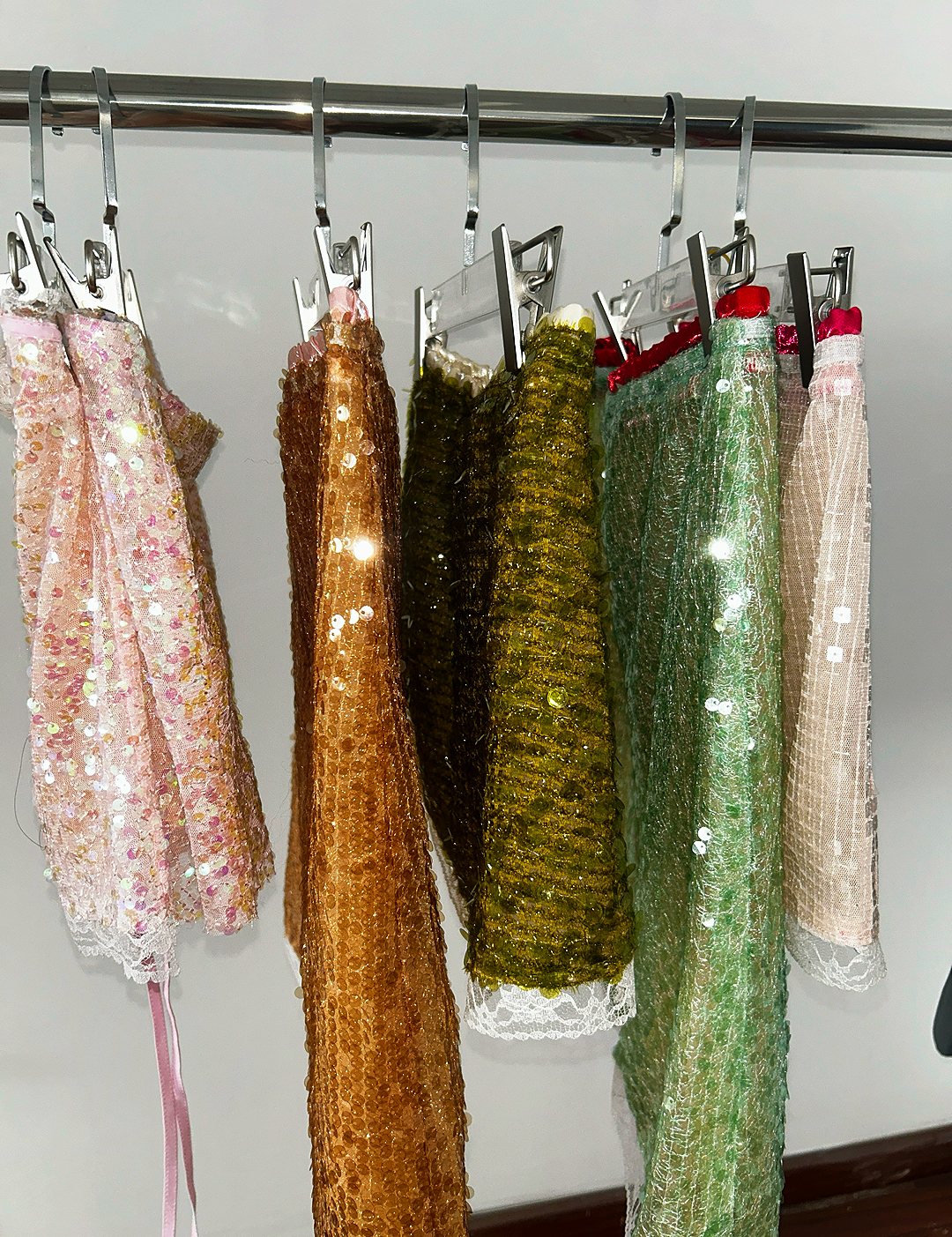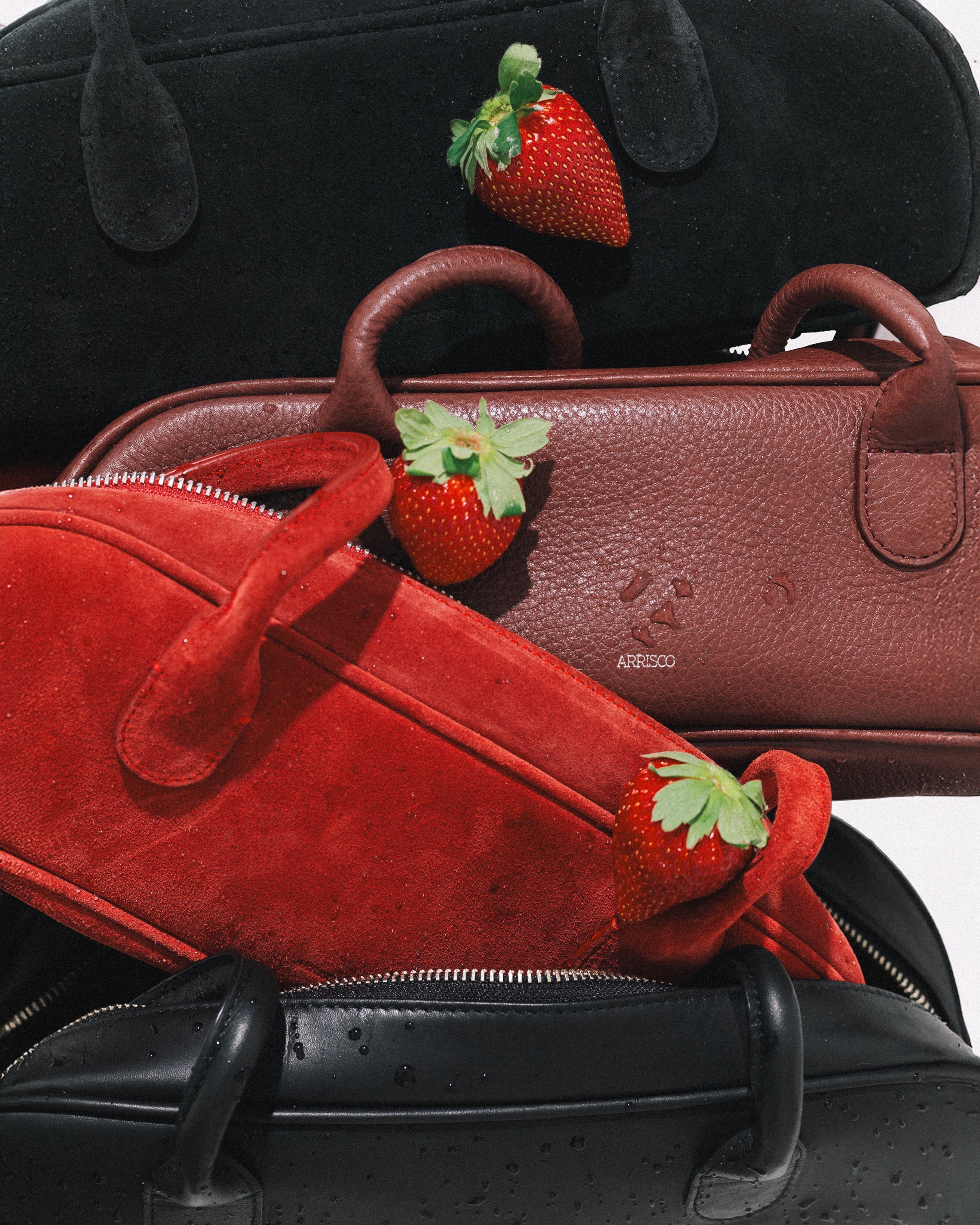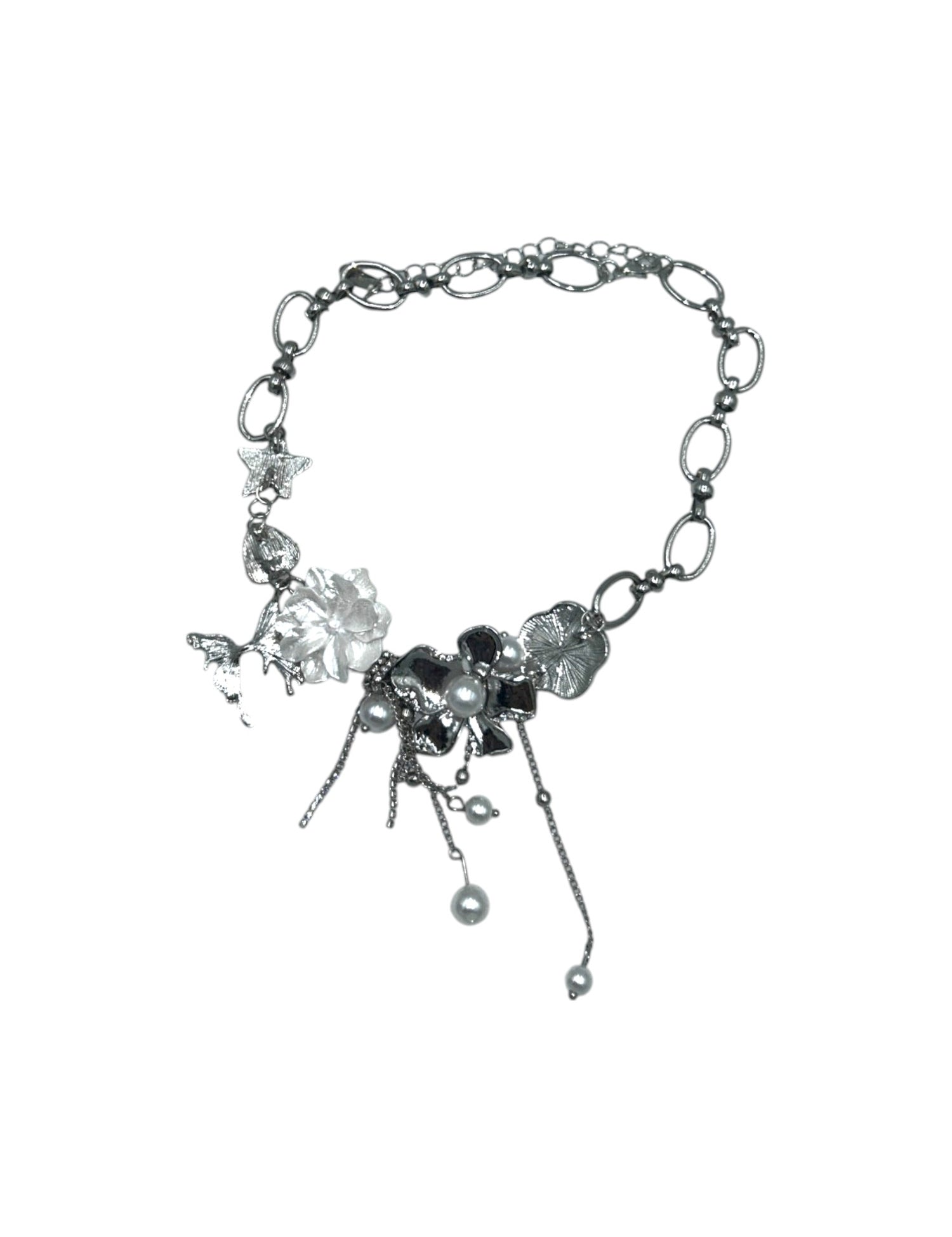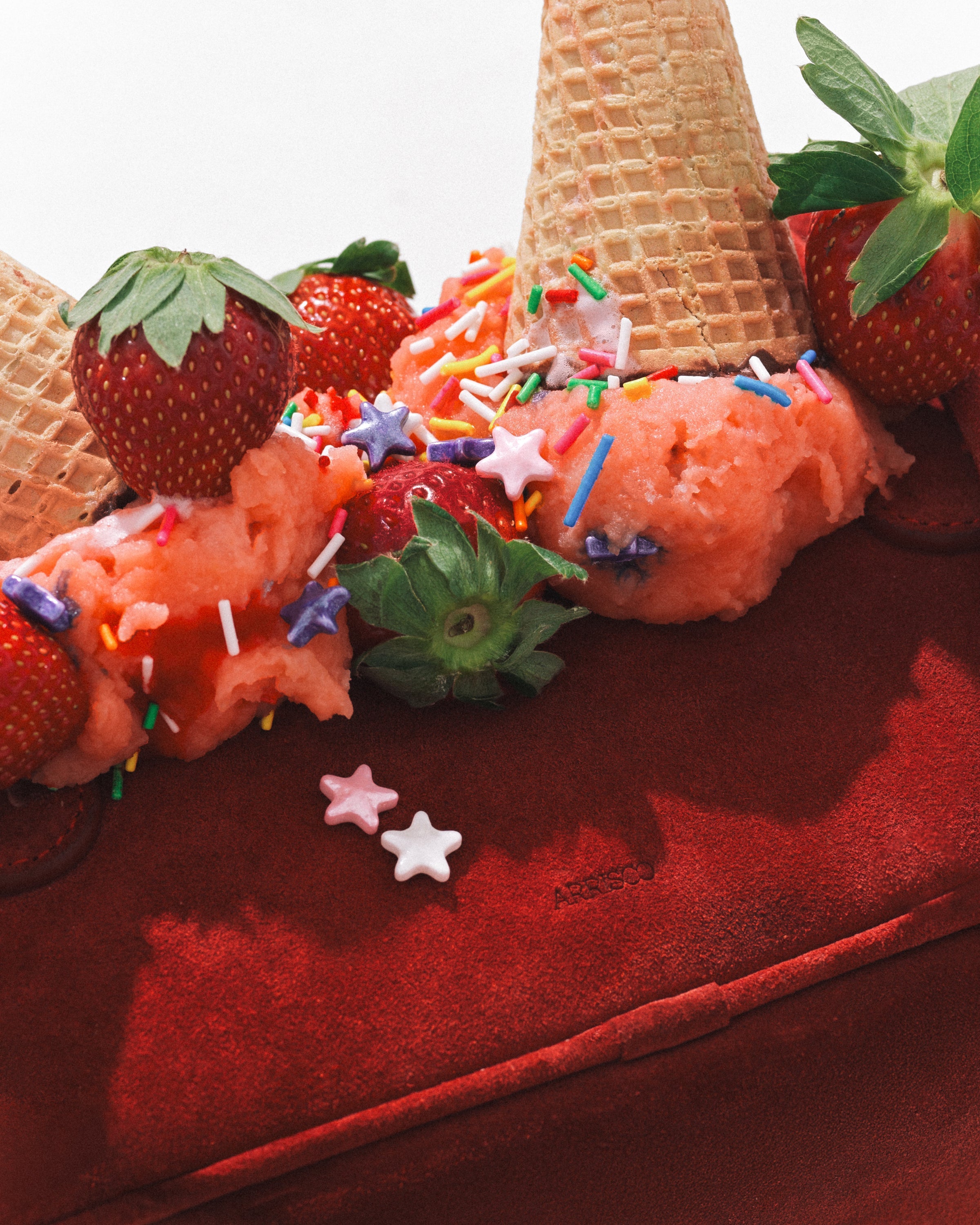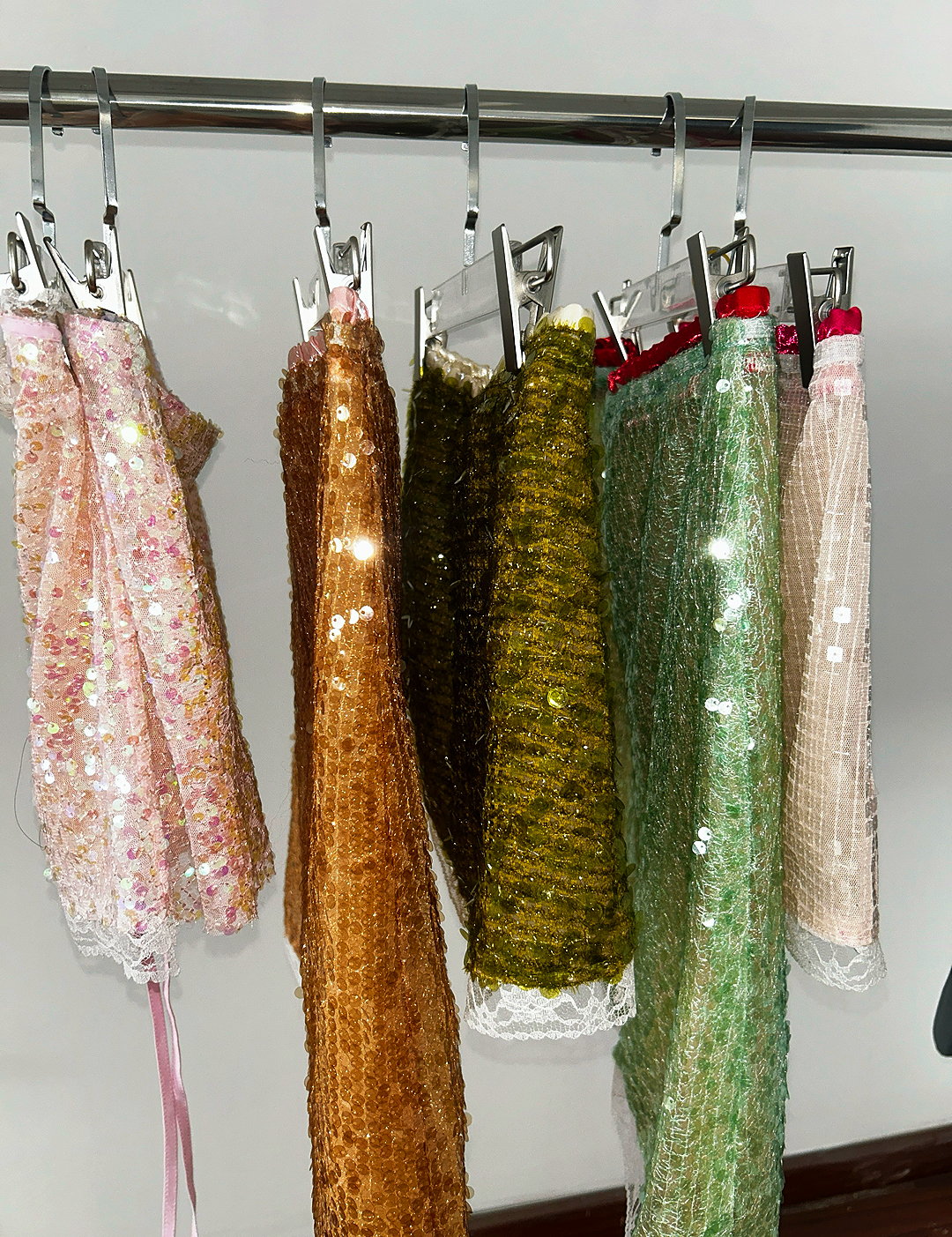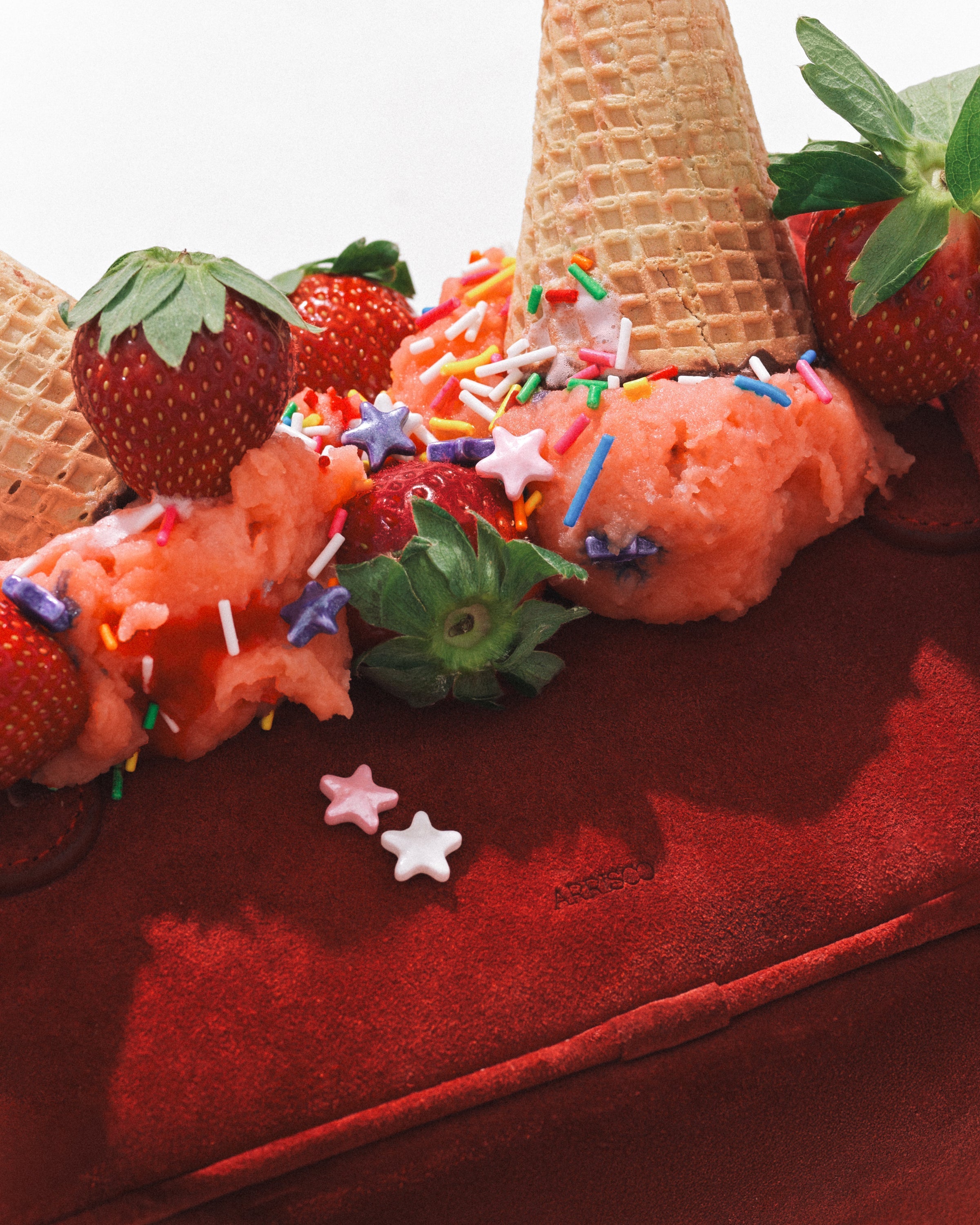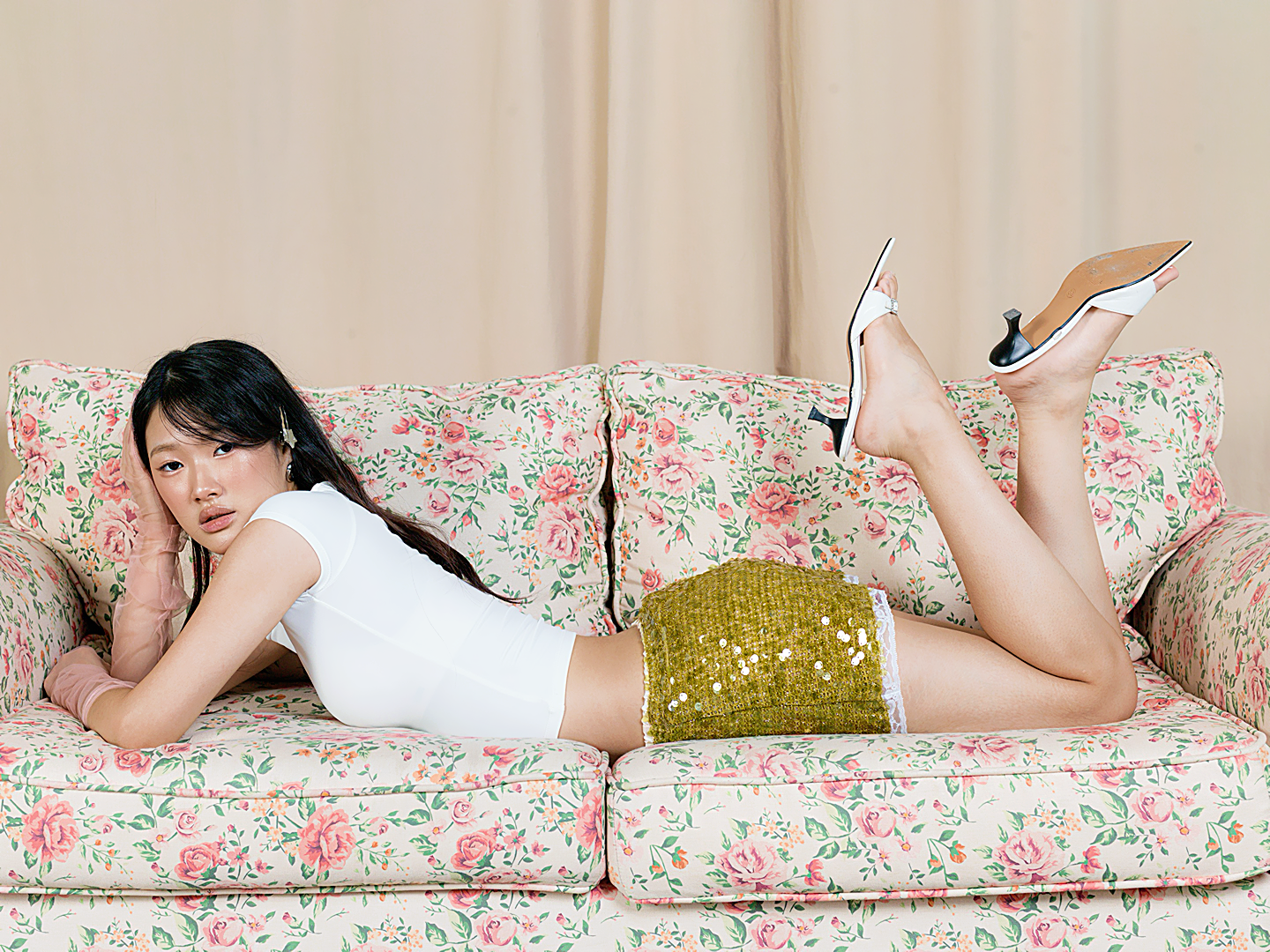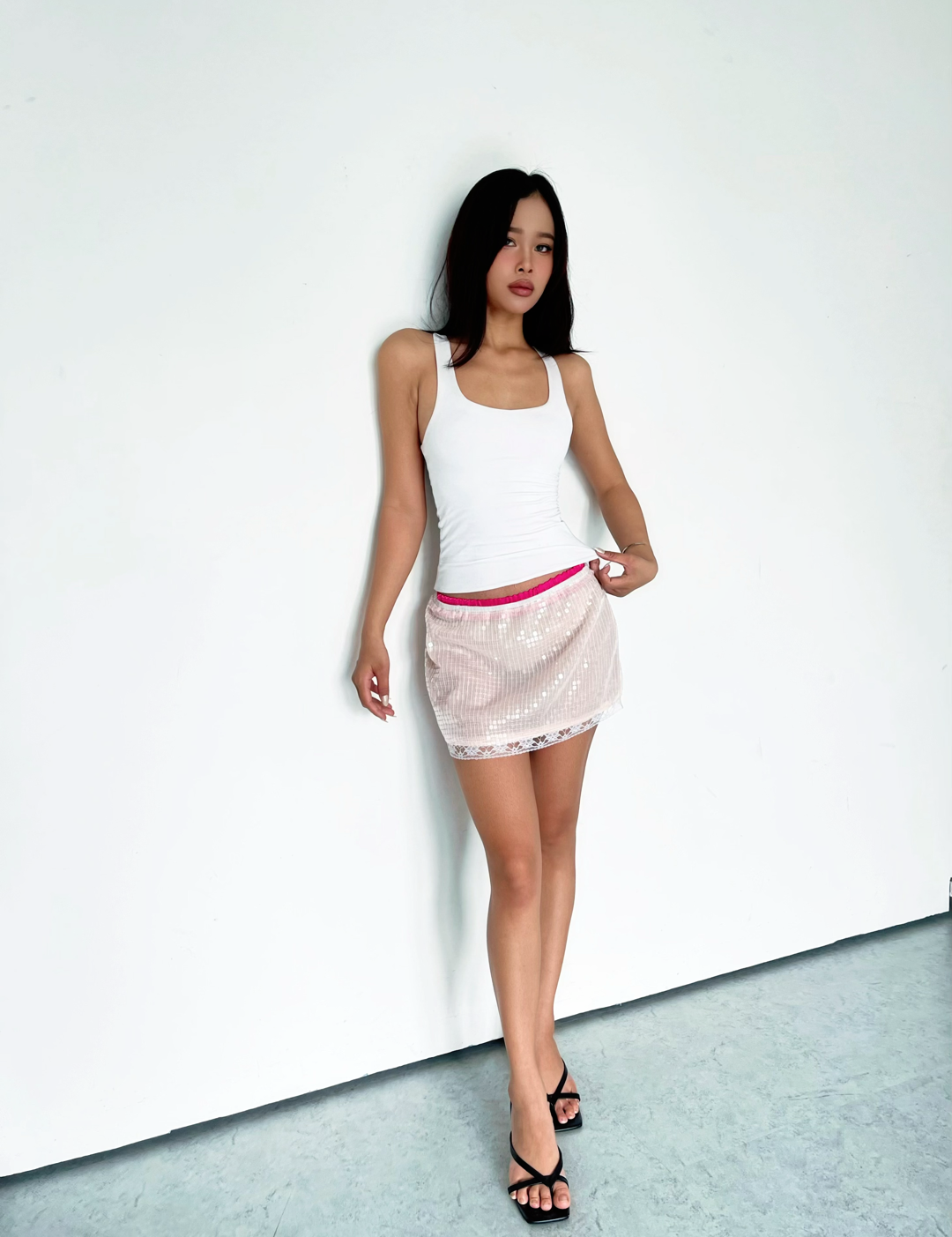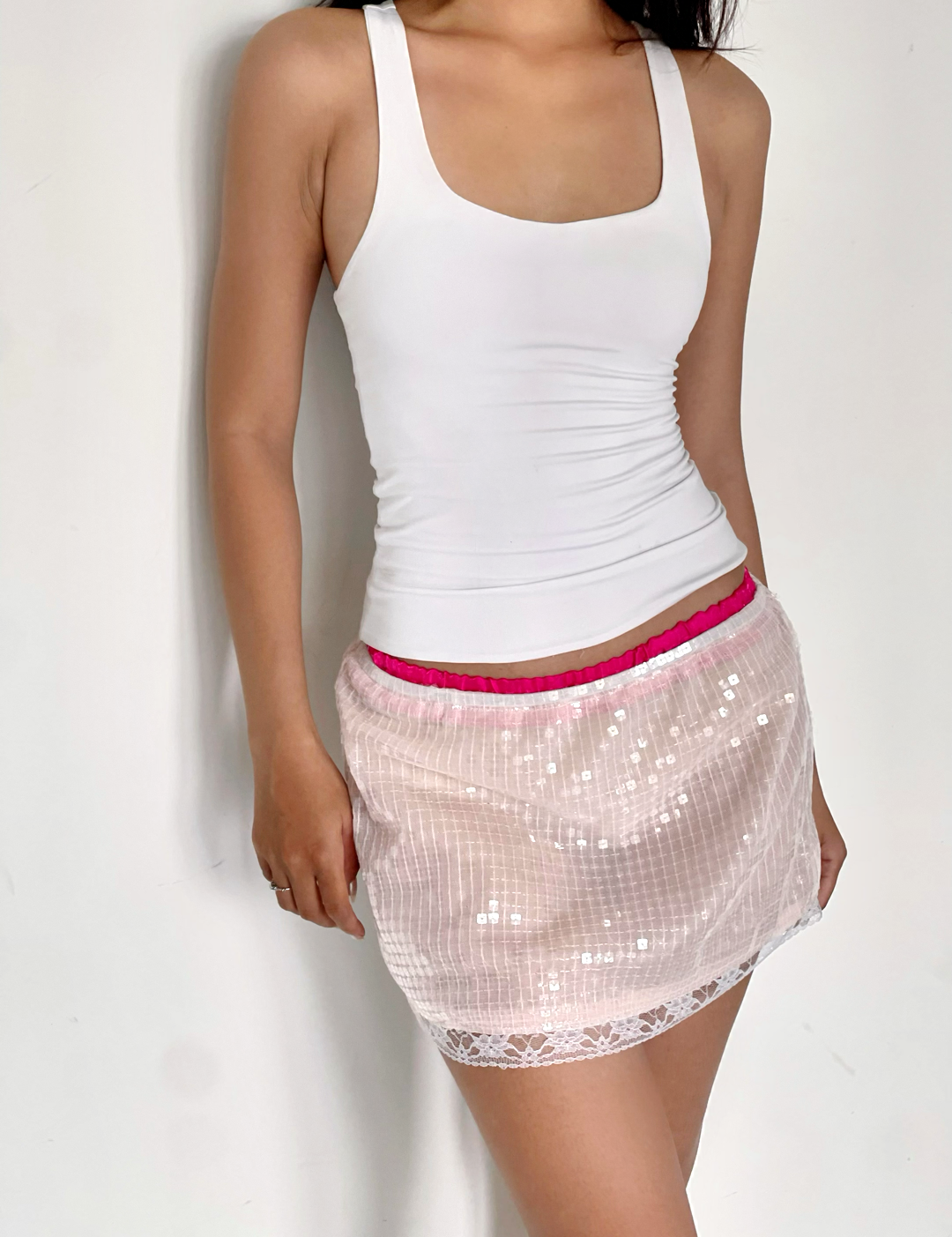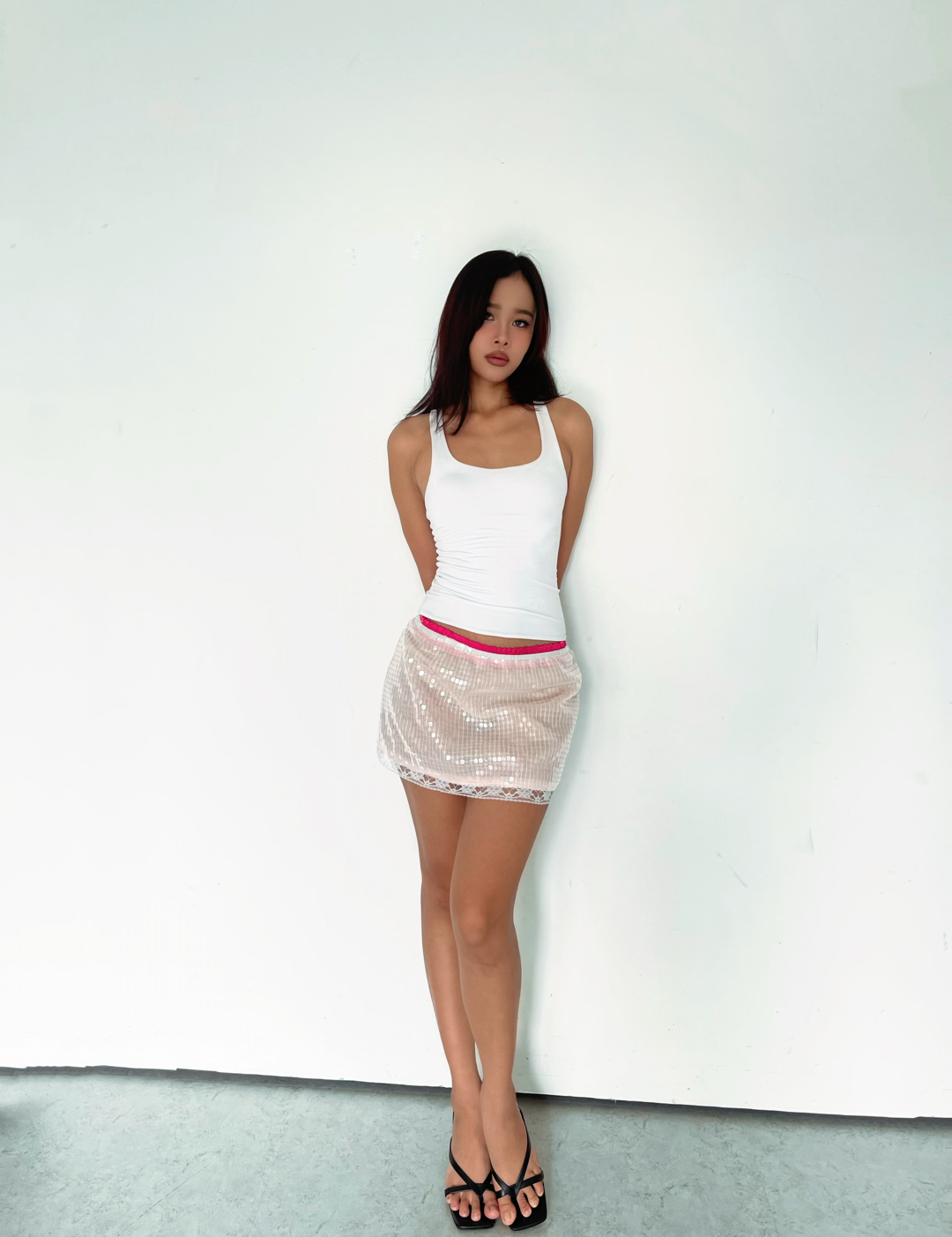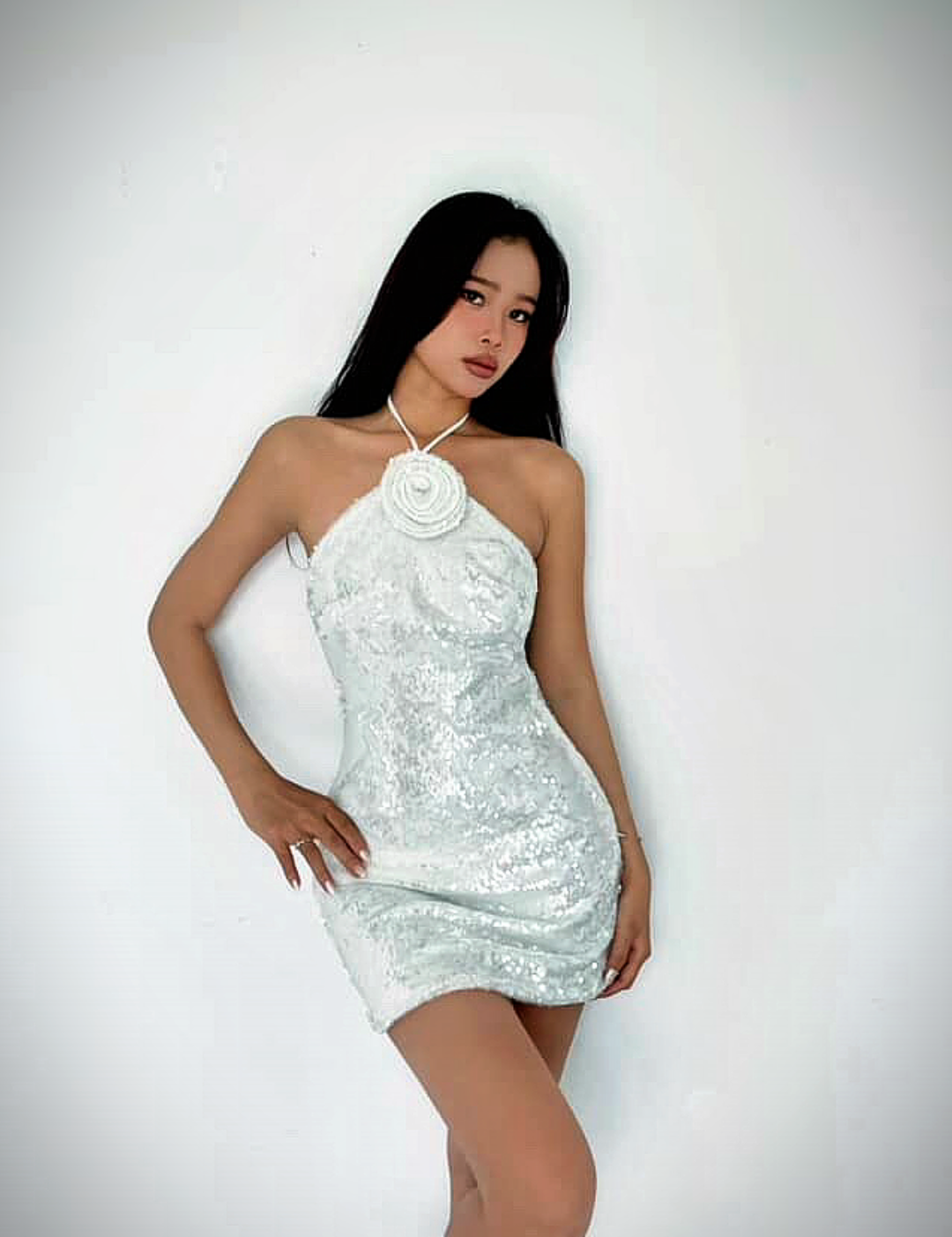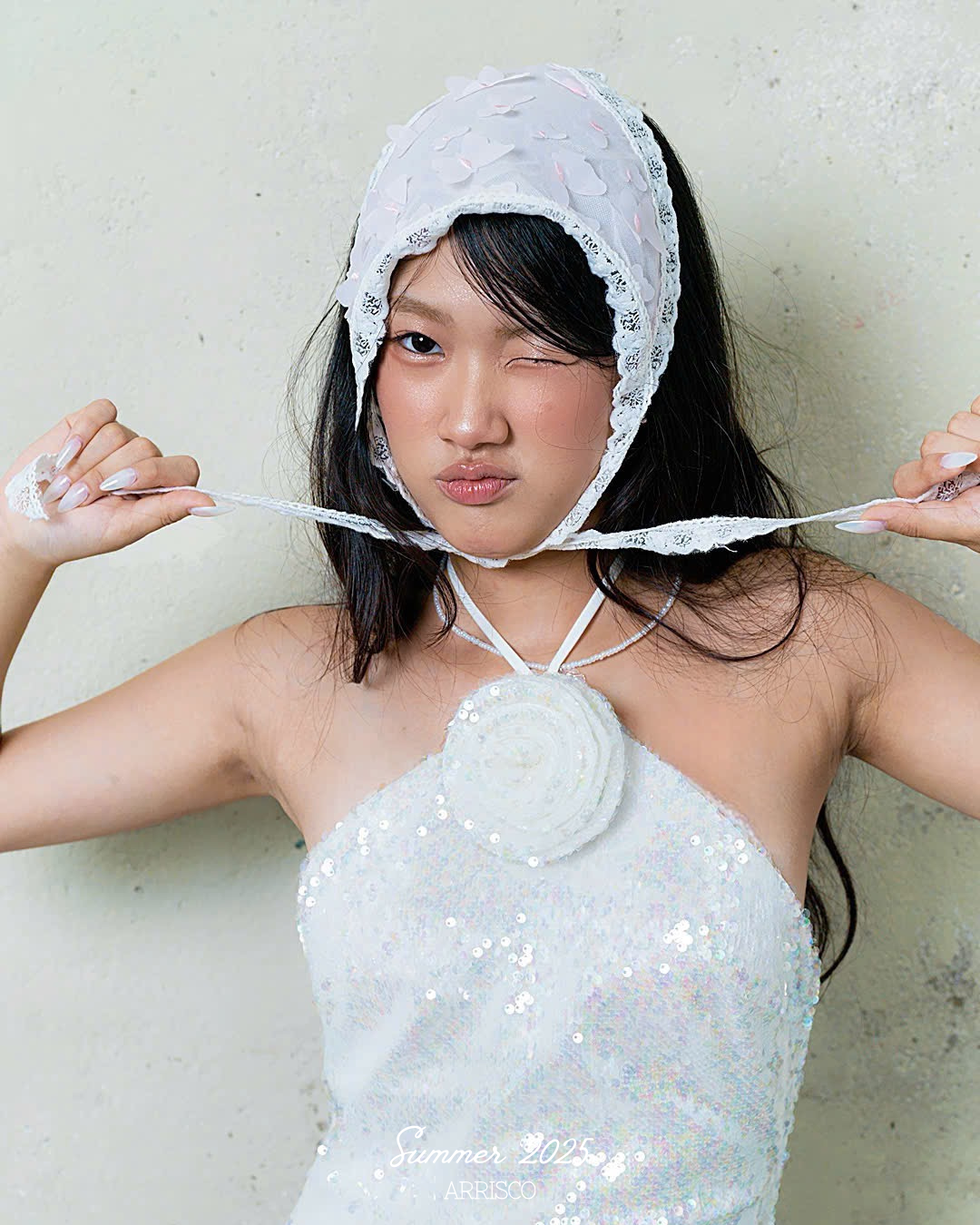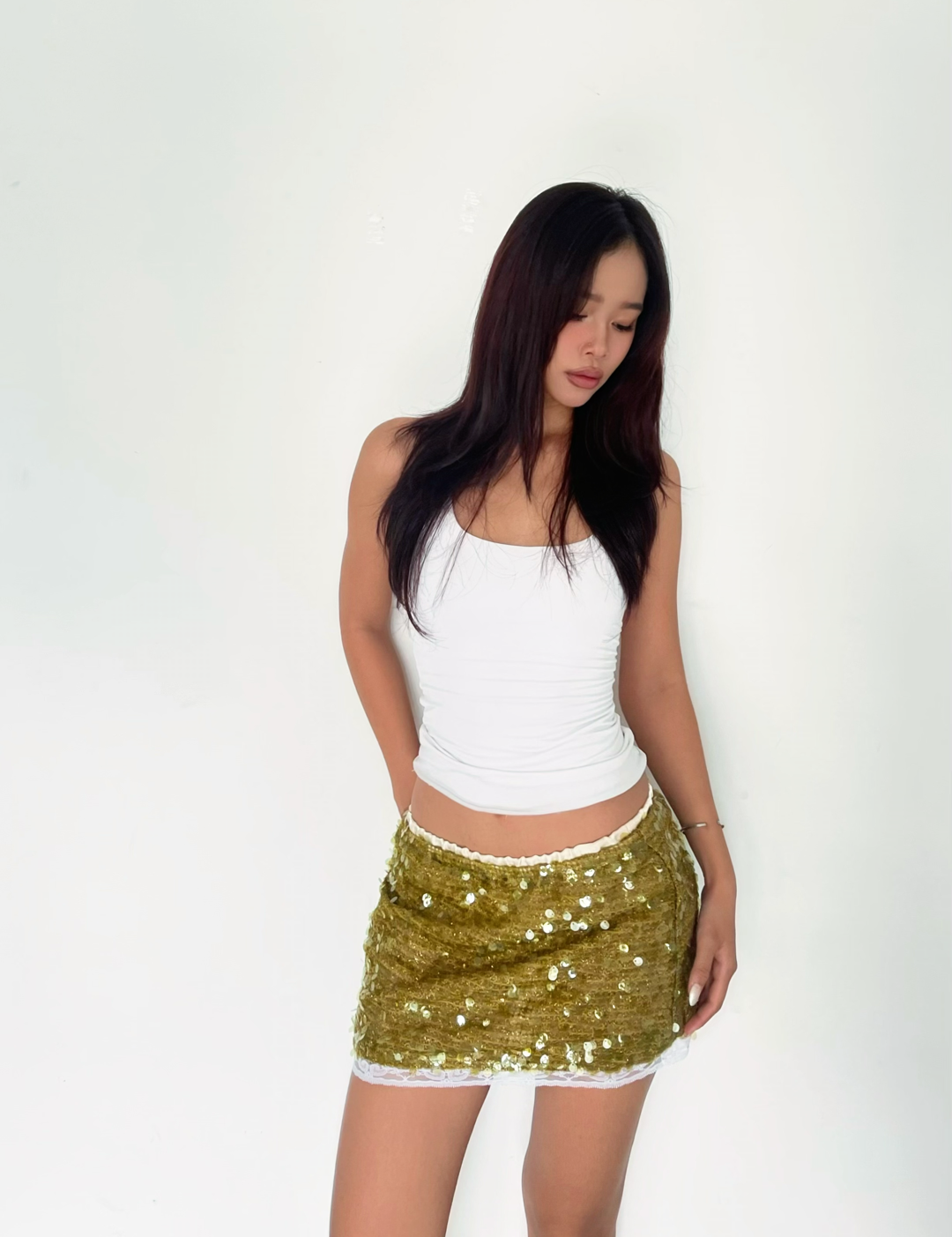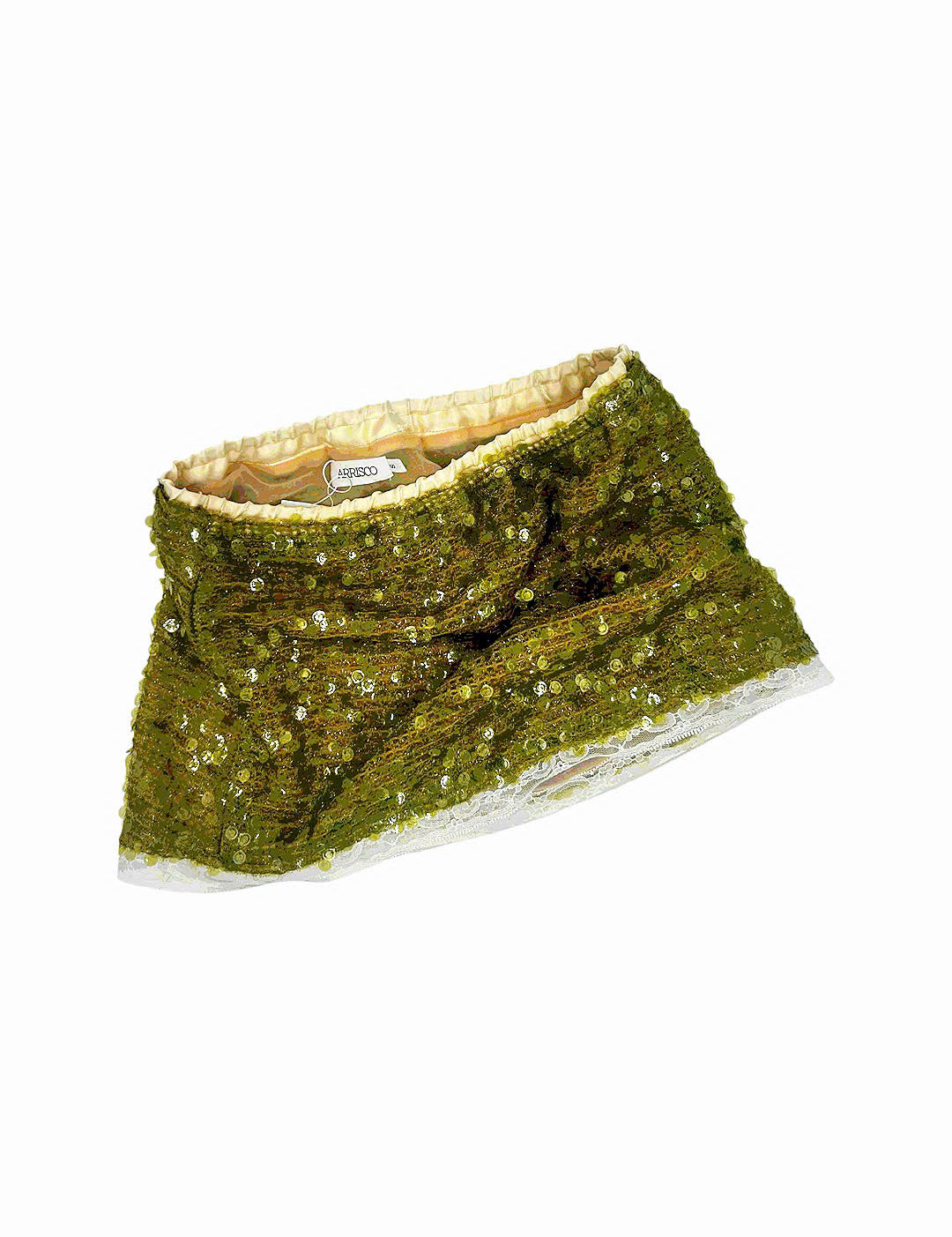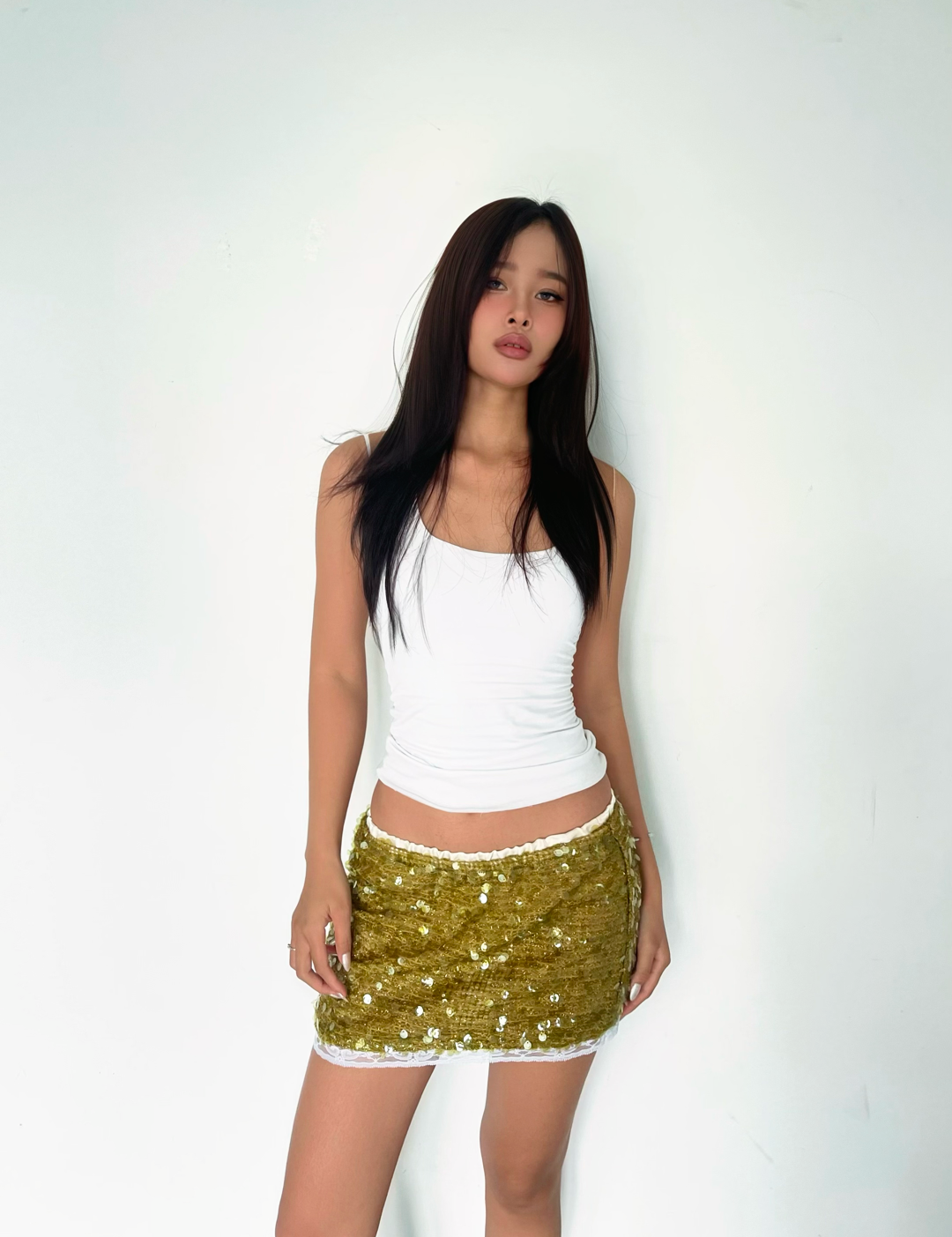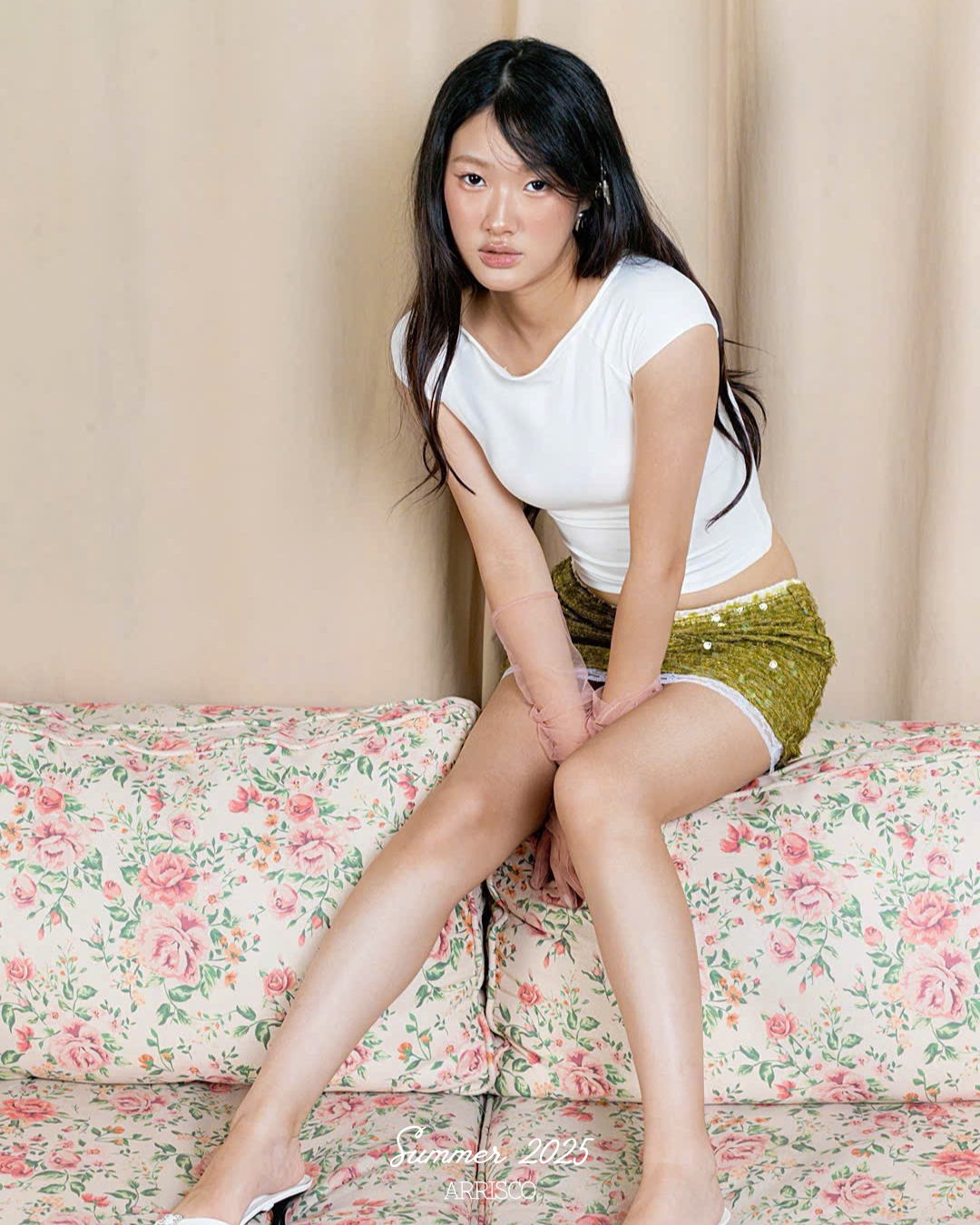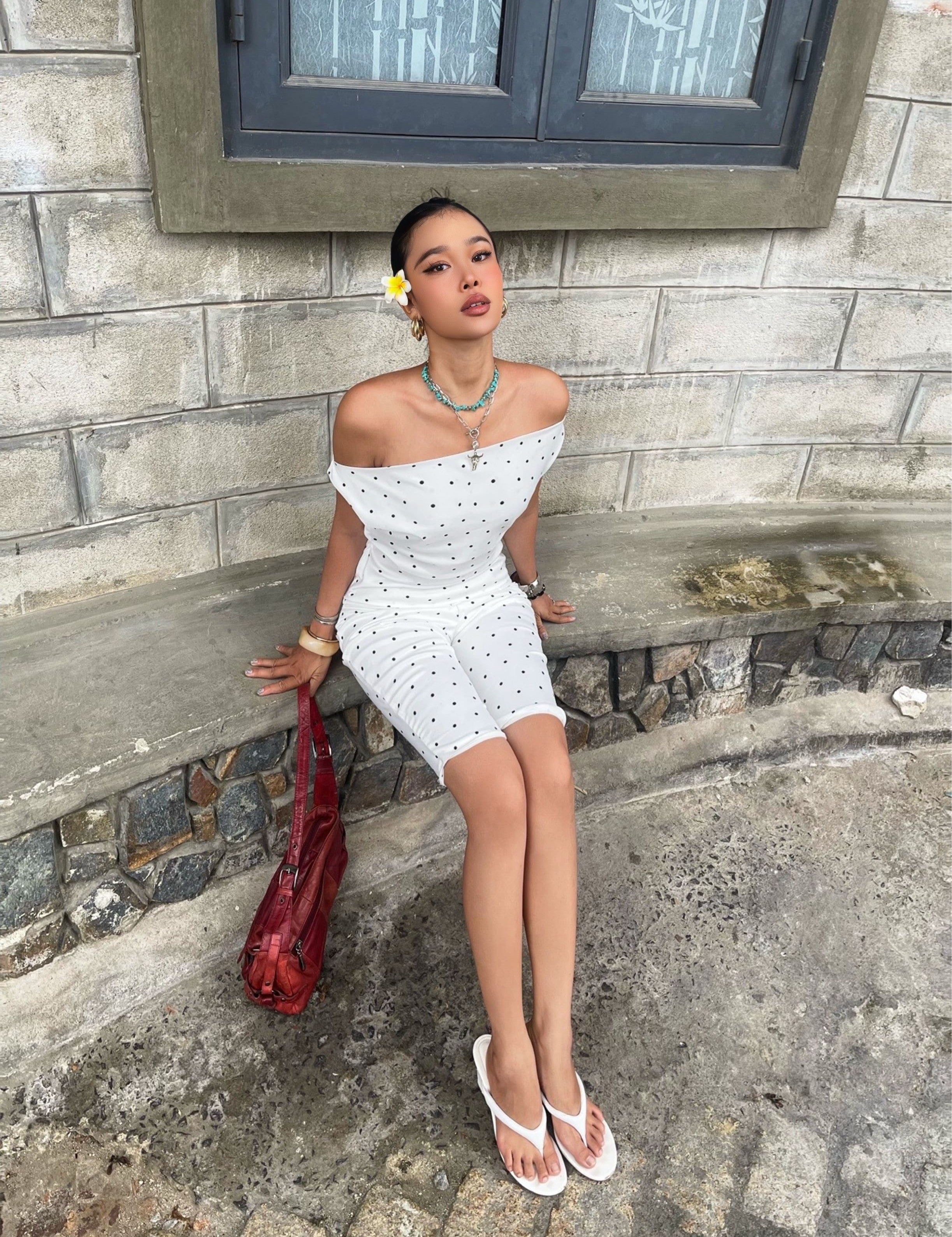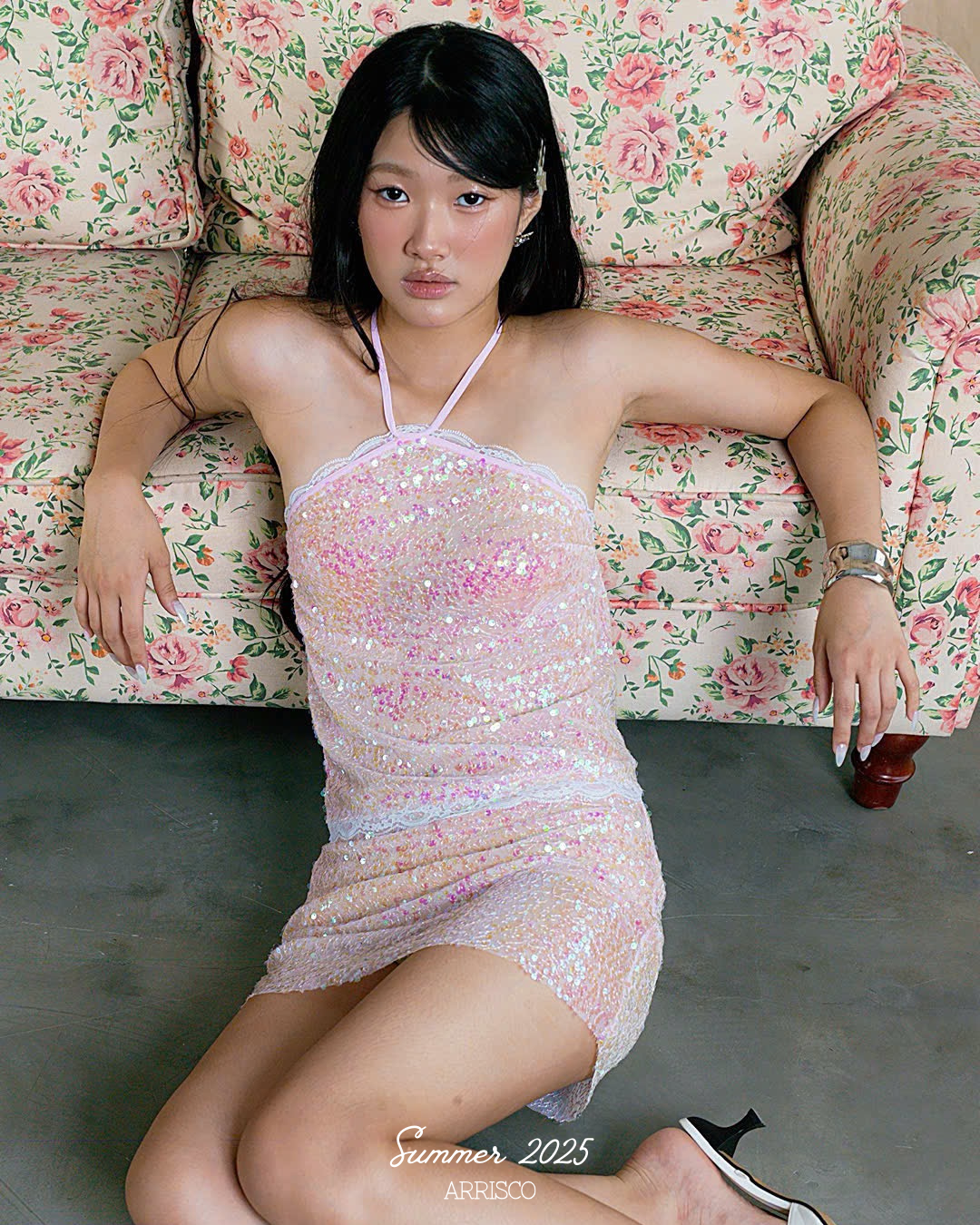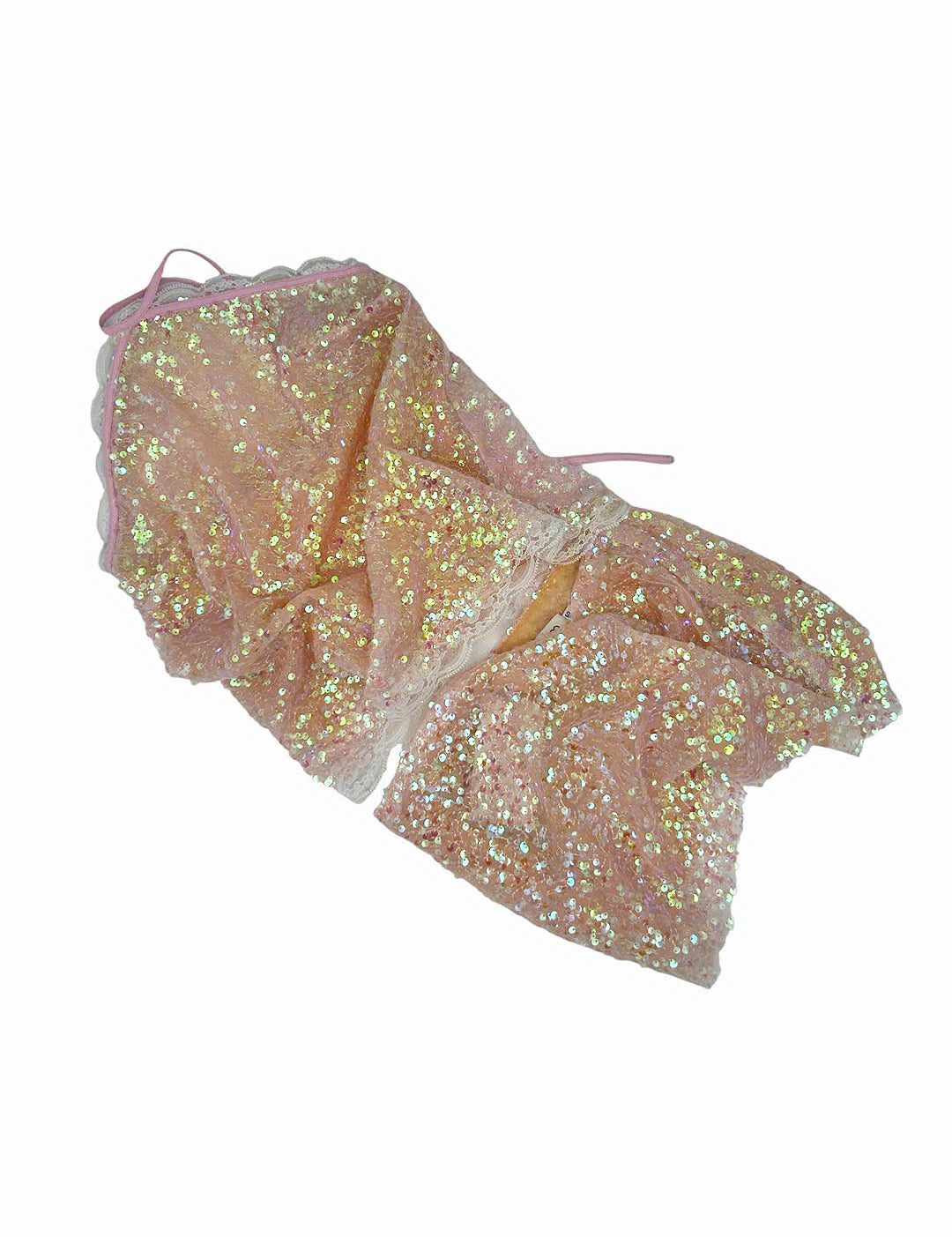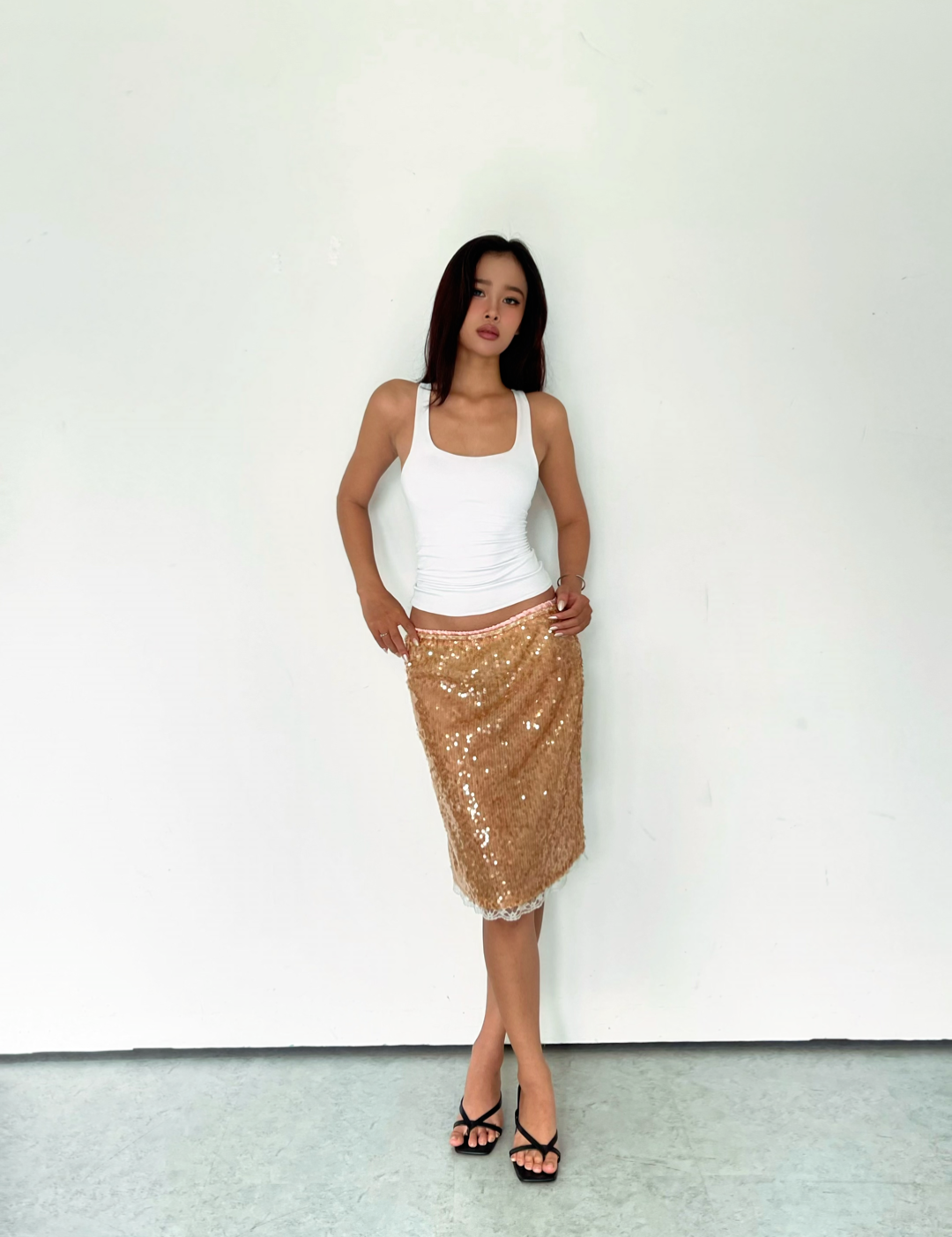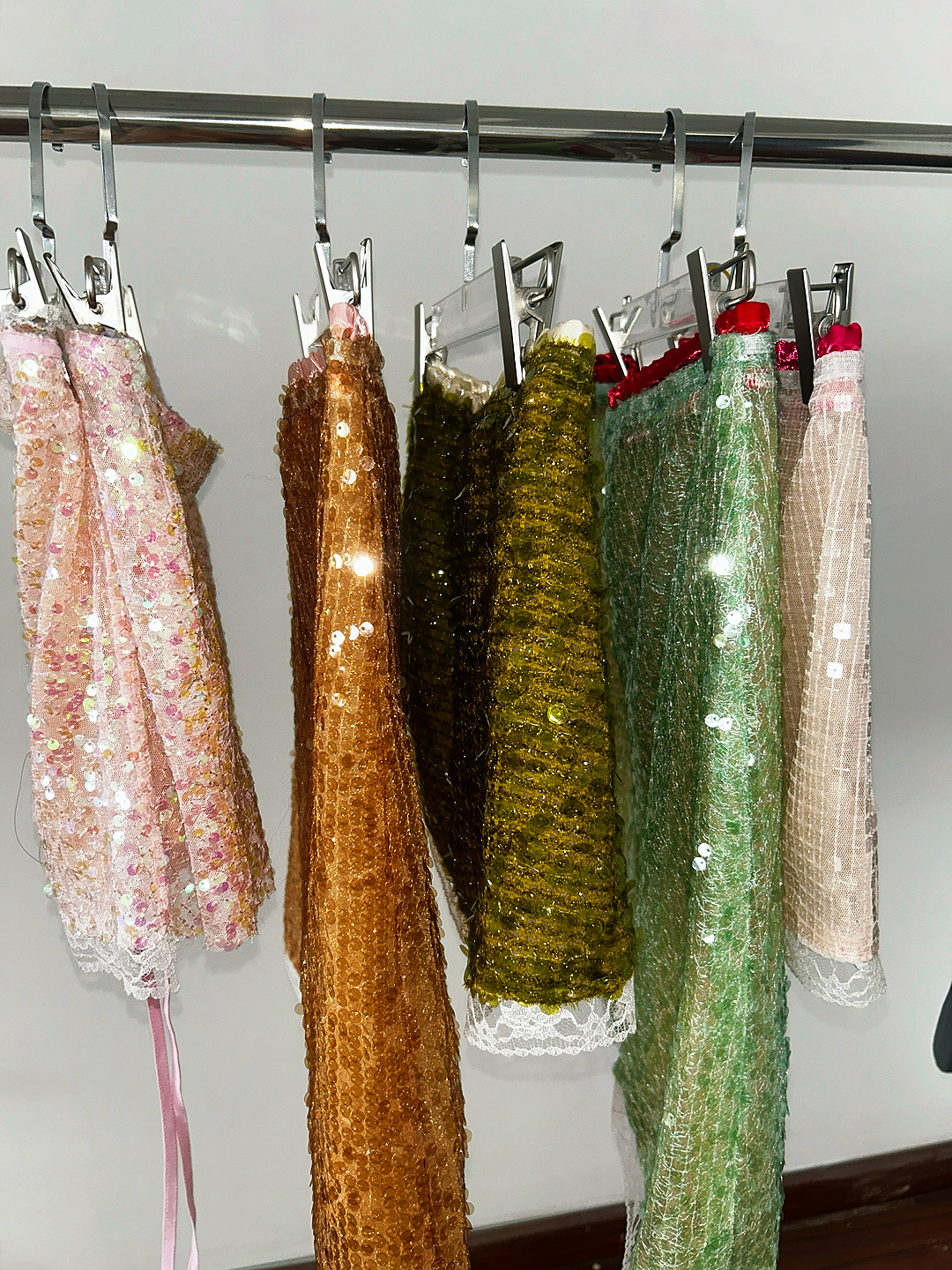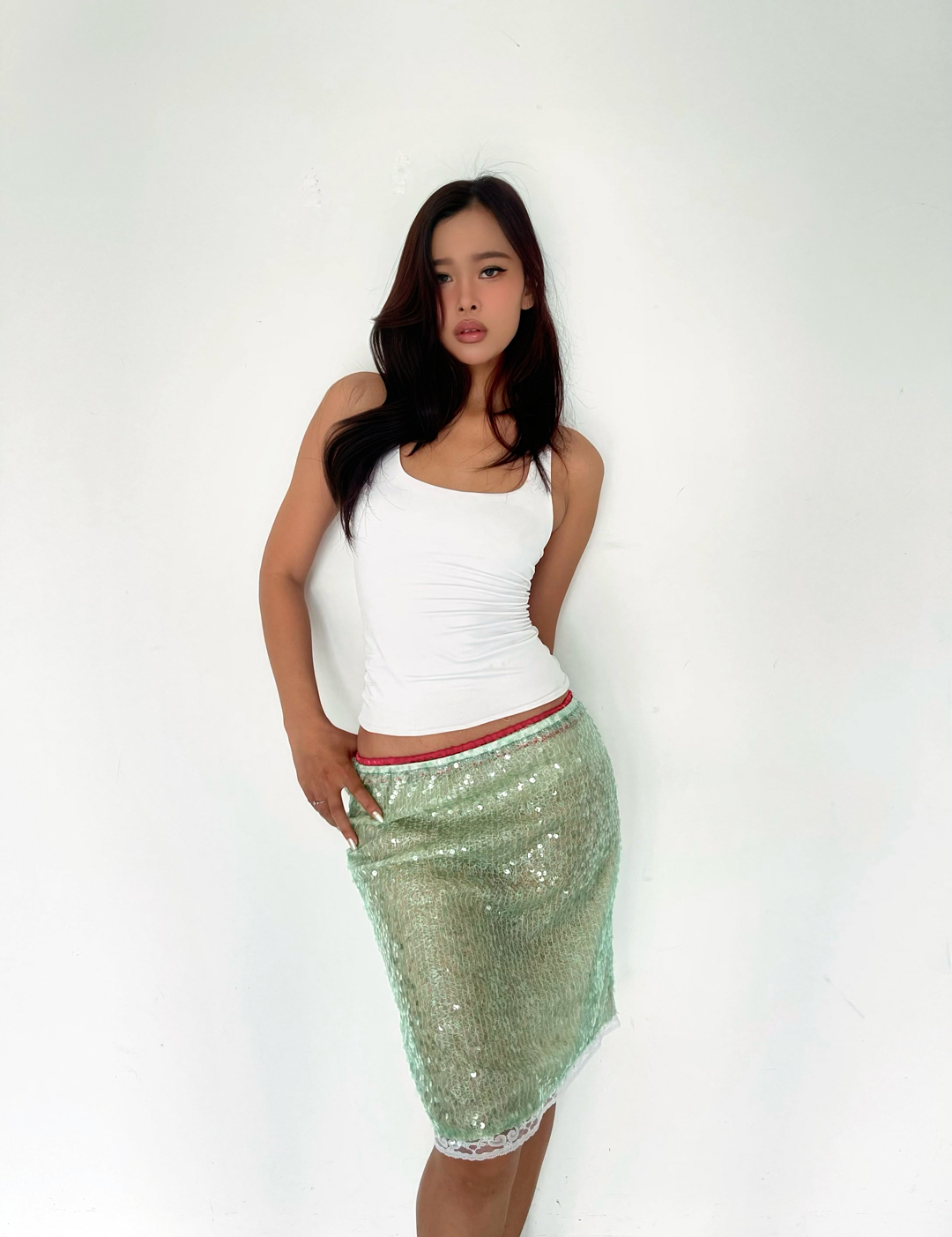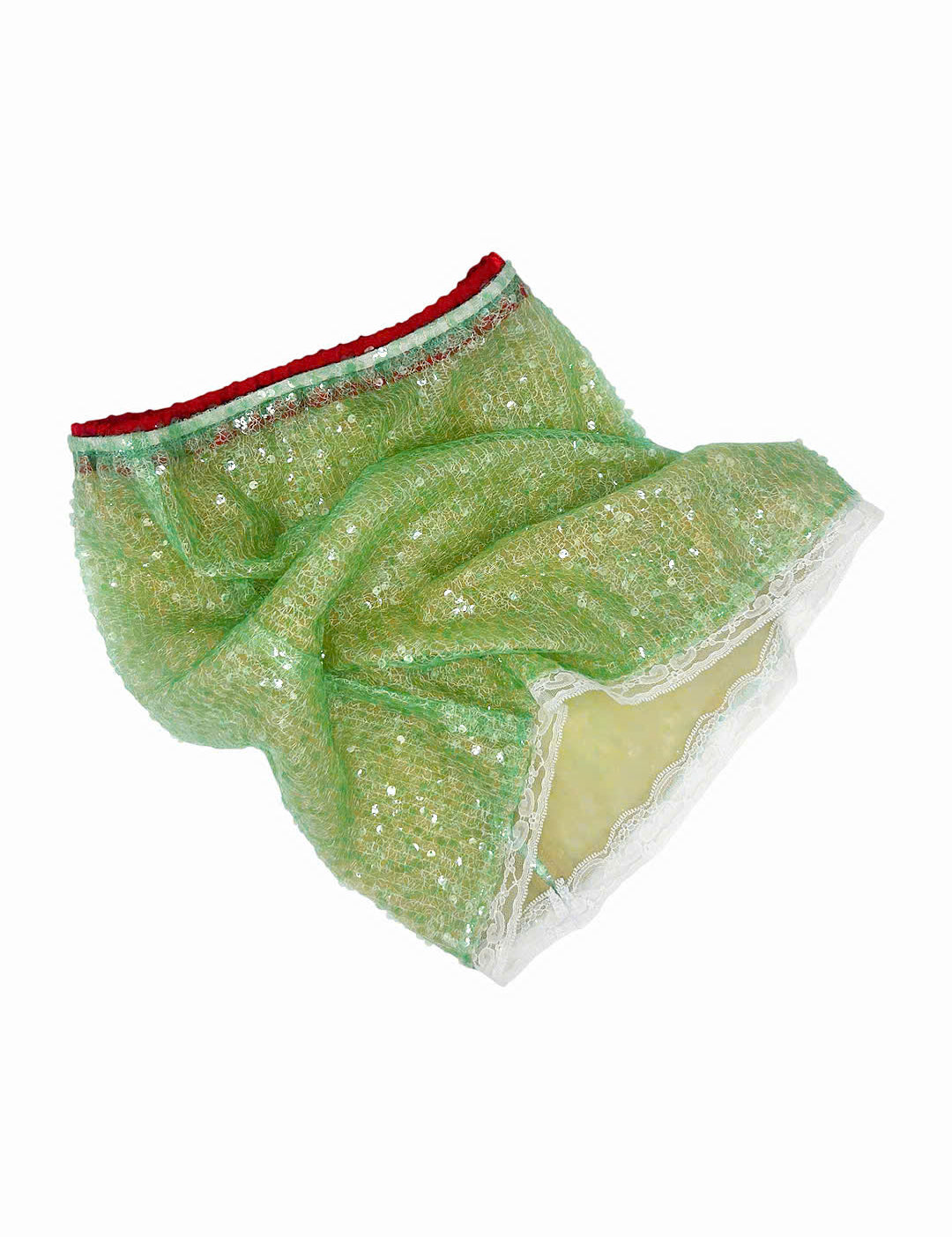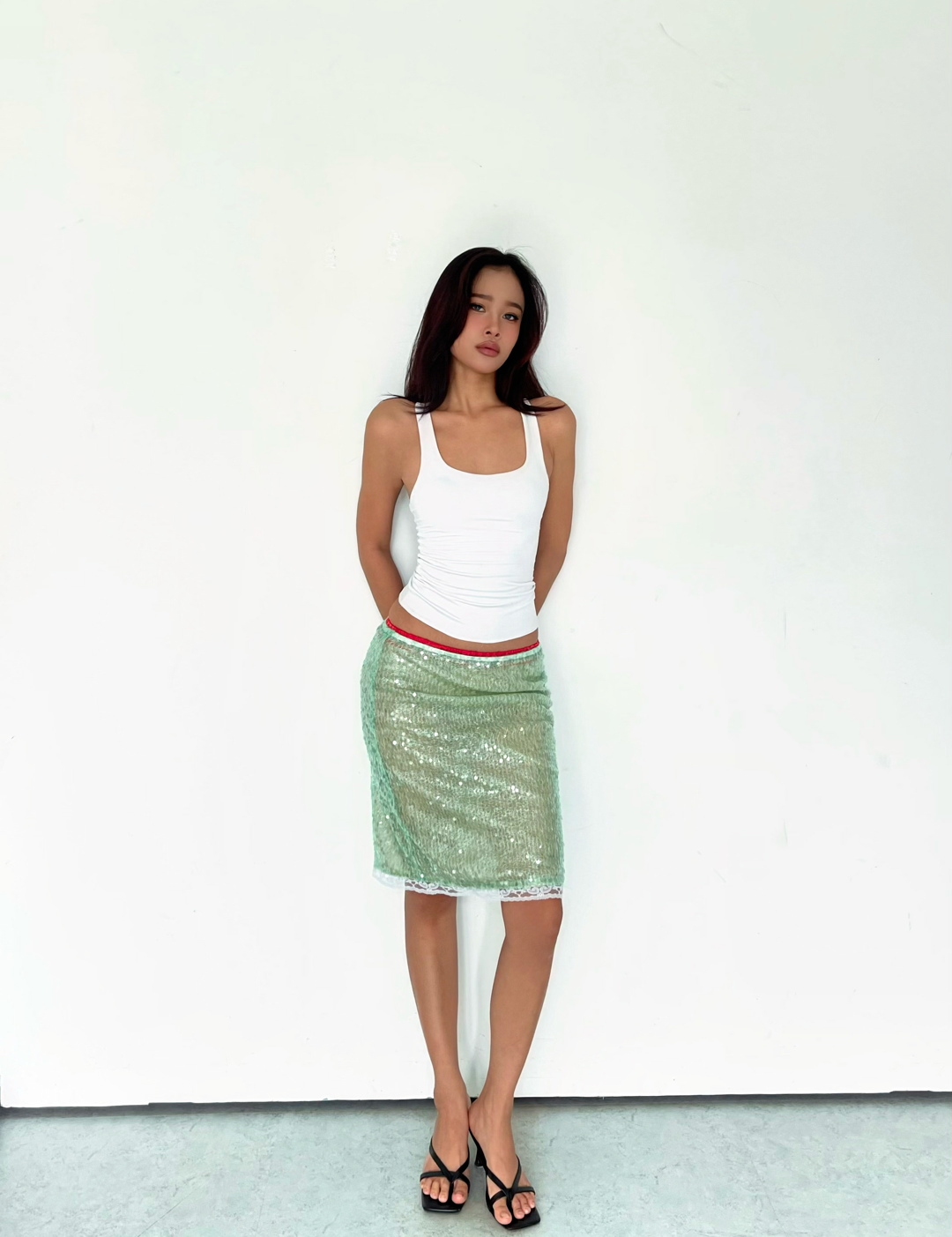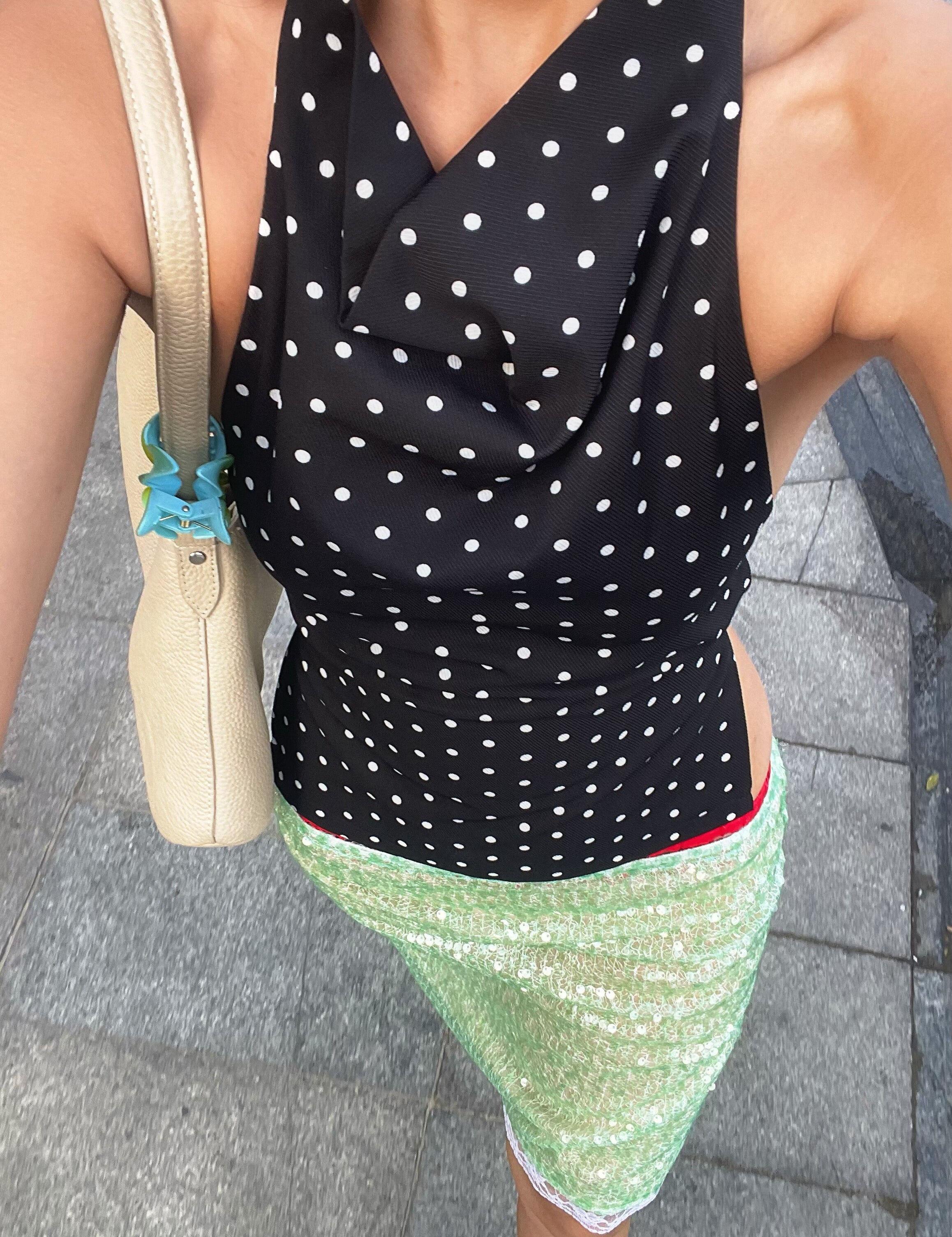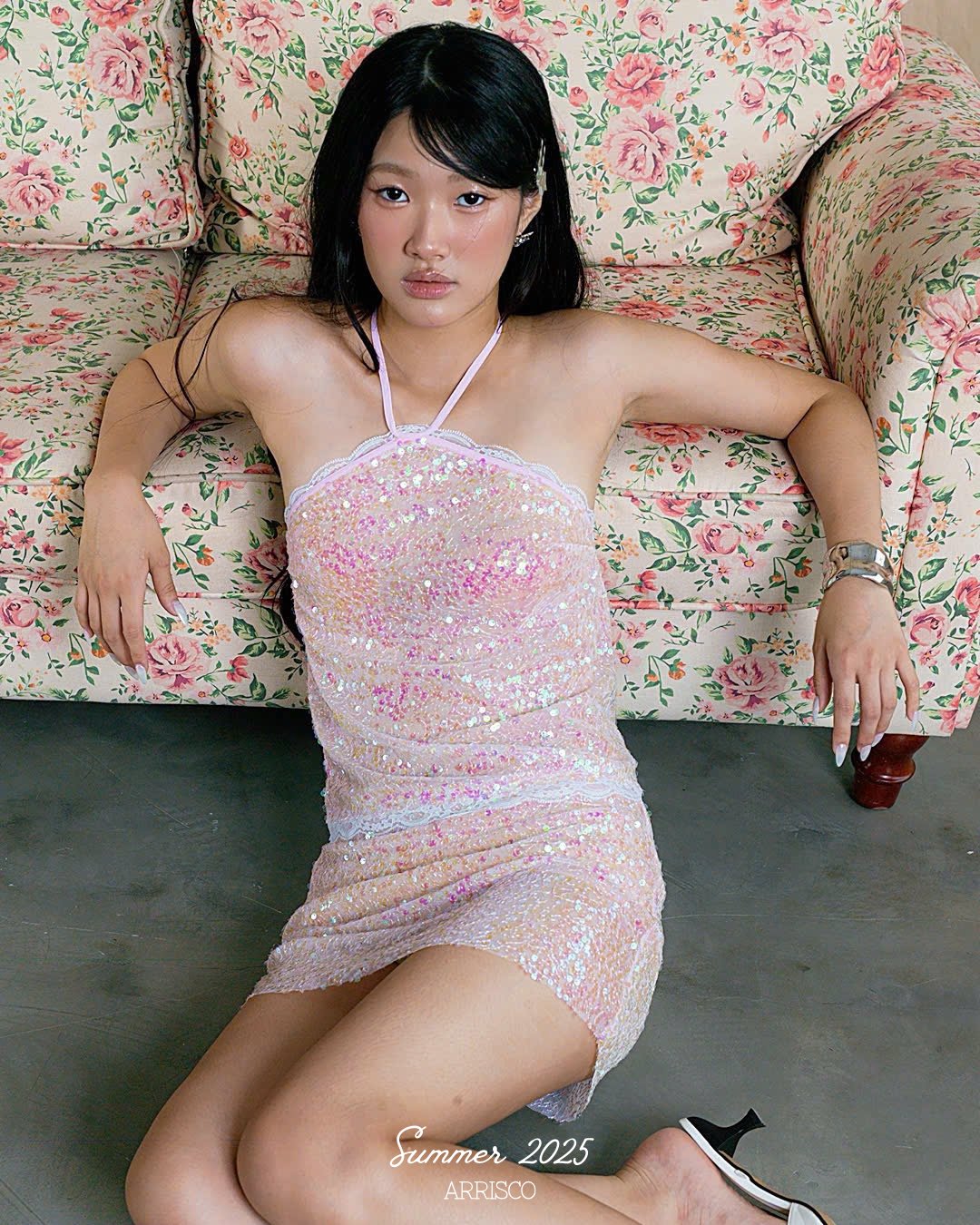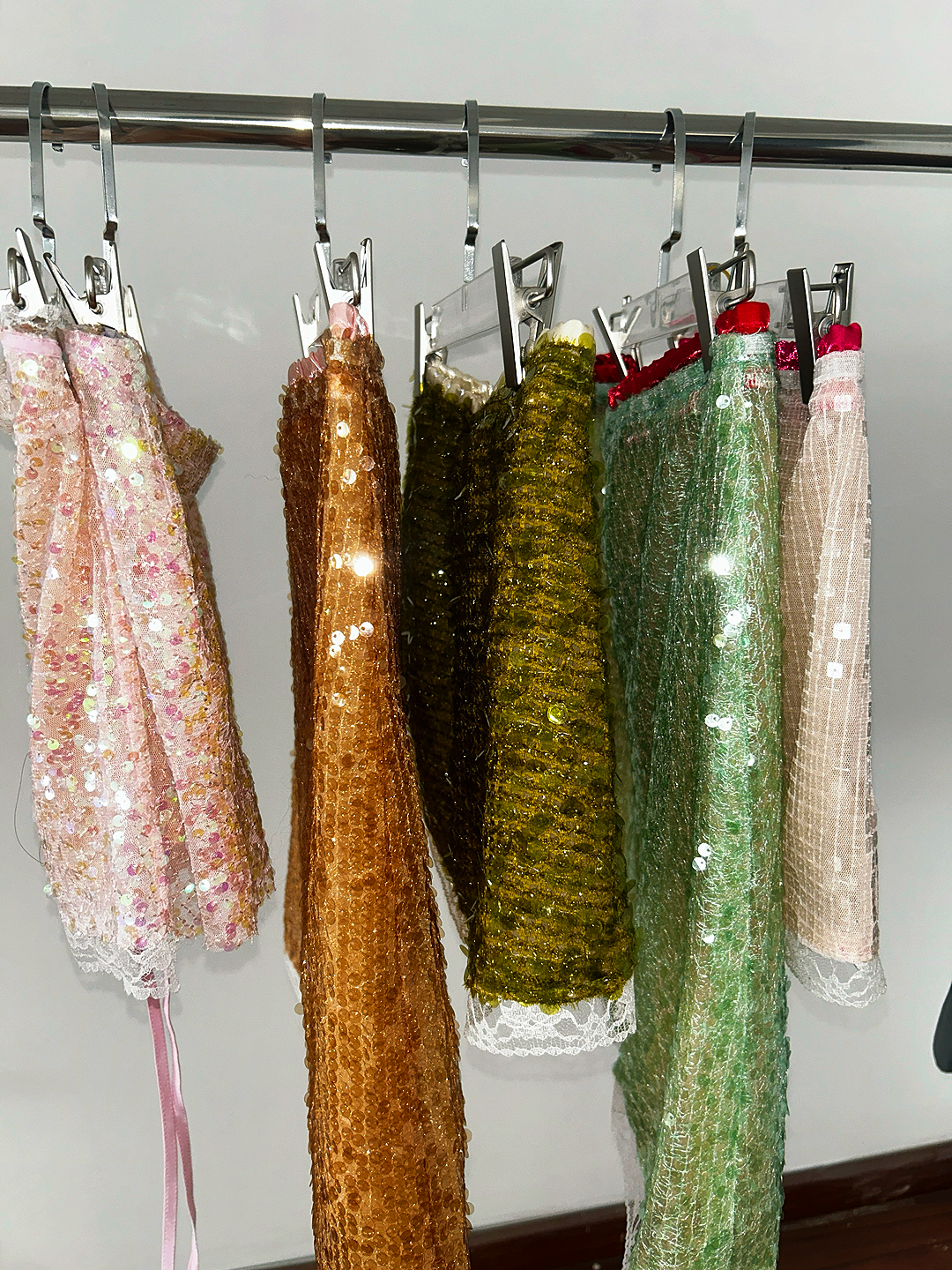Ever get that feeling? You’re staring into a closet packed with clothes, yet nothing feels quite right. The secret to fixing this isn't about buying more stuff or chasing every new trend. It's about discovering the colors that make you come alive.
So, how do you answer the age-old question, "What colors look good on me?" It all starts with one simple, game-changing concept: your skin's undertone.
Your Guide To Finding Flattering Colors
Have you ever tried on a shirt and felt instantly incredible, like you were glowing from the inside out? Then, you try on the exact same shirt in a different color and suddenly feel... meh? That’s not in your head. It's the magic of color harmony at play.
The right shades can make your eyes sparkle and your skin look radiant, giving you an effortless confidence boost. The wrong ones? They can leave you looking tired, washed out, or just plain off. This isn't about following strict fashion rules; it's about learning the simple science of what makes you look and feel your best.
It all boils down to your skin's unique undertone—that subtle, permanent hue just beneath the surface. It's not the same as your skin tone (or overtone), which can change with a tan or a blush. Your undertone is with you for life, and it's the foundation for building a wardrobe that truly works for you.
Why Your Undertone Is the Key
Think of your undertone as the built-in filter that dictates how every color looks against your skin. This is precisely why your friend might look like a superstar in a bright fuchsia top that makes you feel completely drained. It’s all about the interaction between the color of the fabric and the cool, warm, or neutral tones in your skin.
The goal is to create a wardrobe where every single piece makes you feel authentic and vibrant. When your clothes are in harmony with your natural coloring, you don’t just look good—you feel powerful and perfectly put-together.
This guide is your roadmap to unlocking a closet that feels like it was made just for you. Getting a handle on your best colors isn't just about picking out individual outfits; it's a massive step in learning how to find your personal style and creating a look that’s cohesive and confident. After all, the vibrant influence of color in fashion is at its most powerful when it's personal.
Ready to dive in? Let's break down the concepts you need to finally nail down your undertone and start your journey to a more colorful, confident you.
The Secret Language Of Your Skin Undertone
Let's get into the biggest secret for figuring out "what colors look good on me": your skin's unique undertone. This has nothing to do with how light or dark your skin is. That's your skin tone, and it can totally change with a bit of sun. Your undertone, on the other hand, is the permanent, subtle hue just beneath the surface. It's the foundation of your entire color story.
Think of it as the quiet background color that’s always there. It can be cool (leaning pink, red, or blue), warm (with hints of yellow, peach, or gold), or a neutral blend of both. Nailing this is the absolute key to picking colors that make you look alive and radiant, instead of tired or washed out. And while we're on the topic of skin, it's also super helpful to know your overall skin type. For a great walkthrough, check out this guide on how to determine your skin type.
Find Your Undertone With These Easy Tests
Ready to do a little detective work? You can figure out your undertone right now with a few simple tricks at home. Just find a mirror and some good, natural daylight—it's the only way to see what's really going on with your skin.
1. The Vein Test
This is the quickest and most popular trick in the book. Just flip your wrist over and look at the veins.
- Cool Undertone: Your veins look straight-up blue or even a little purple.
- Warm Undertone: Your veins have a greenish or olive tint to them.
- Neutral Undertone: It's a toss-up. You see both blue and green, and you can't really decide which one stands out more.
This little infographic breaks it down perfectly, making the Vein Test a breeze.
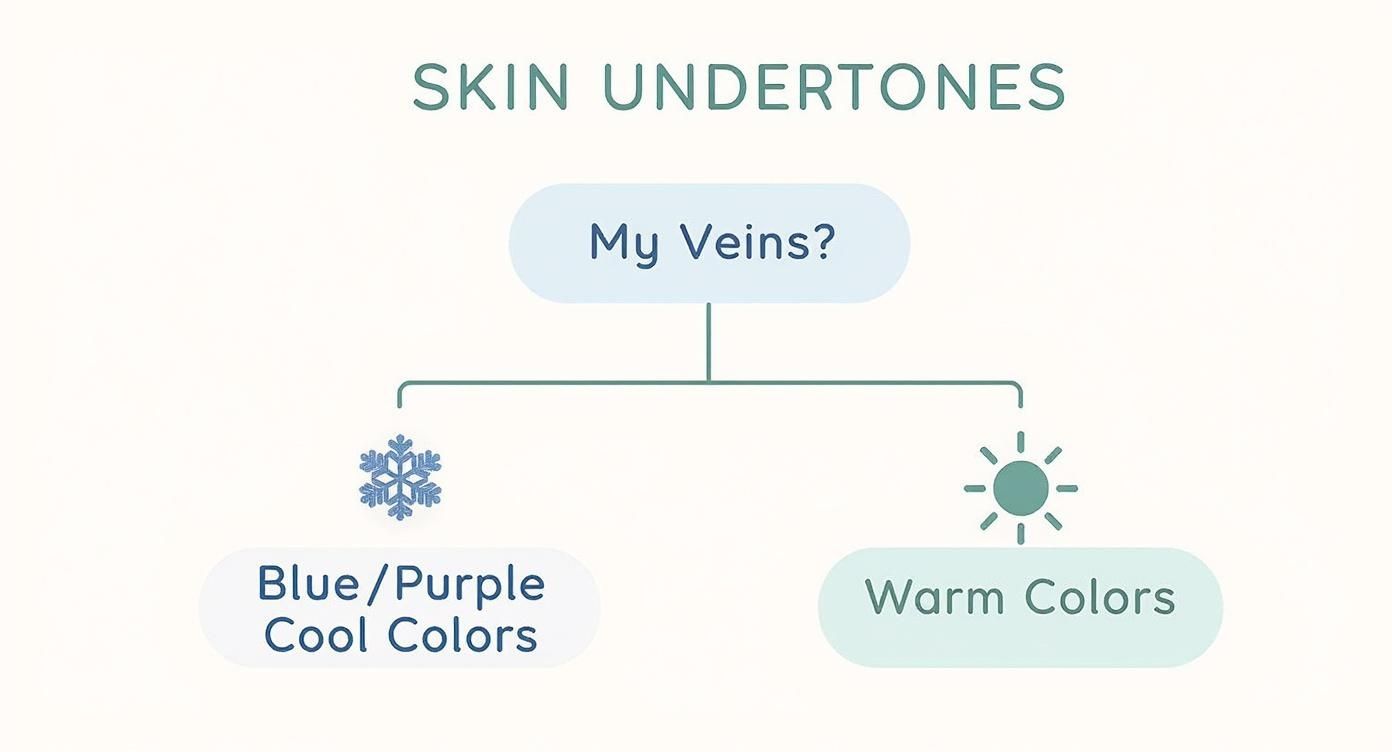
As you can see, those blueish veins are a sign that cool colors are your jam, while greenish veins mean you'll absolutely glow in warm shades.
2. The White Fabric Test
Grab something pure white—a t-shirt, a towel, even a piece of paper—and hold it up next to your face (with no makeup on!). That stark white background is amazing for revealing the subtle hues in your skin.
- If your face looks a bit pink or rosy in comparison, you've likely got cool undertones.
- If your skin takes on a yellowish or golden cast, you're probably in the warm undertone club.
- If you can rock both pure, bright white and creamy off-white without looking drained, you might just be a neutral.
3. The Jewelry Test
Time to raid the jewelry box! Which metal truly makes your skin light up?
- Cool undertones come to life with silver, platinum, and white gold.
- Warm undertones look incredible in yellow gold, rose gold, and copper.
- If you can effortlessly switch between both and look great, you're almost certainly a neutral.
By piecing together the clues from these three tests, you'll get a really solid idea of your skin's natural color harmony. Don't sweat it if one test feels a bit ambiguous—just look for the overall pattern. This little bit of self-knowledge is your ticket to unlocking a world of colors that will make you shine.
Discover Your Personal Color Season
Okay, you’ve figured out your skin’s undertone—awesome! Now for the really fun part. We’re about to dive into the brilliant world of Seasonal Color Analysis. This is where we take that undertone knowledge and expand it into a full, personalized color palette that makes you shine.
Think of it as a framework that categorizes everyone's unique coloring into one of four "seasons": Spring, Summer, Autumn, and Winter. Each season has its own distinct vibe, defined by more than just warm or cool tones. We’re talking about things like contrast, intensity, and clarity.
It's a common misconception that all cool-toned people are the same. For example, both Summer and Winter are cool seasons. But a Winter palette is packed with bold, crisp, high-contrast colors, while a Summer palette is much softer, more muted, and gentler. Getting these subtle differences is the real secret to mastering your look.
The Four Seasons of Color Explained
So, which season are you? Let’s break down the core personality of each palette. Seeing the traits laid out side-by-side makes it so much easier to see where you might fit. This is such a critical step in learning how to find your personal style, because your colors are the foundation of a wardrobe that truly feels like you.
-
Spring: You have warm, golden undertones and an overall bright, clear, and fresh appearance. Your best colors are light and full of life, just like the first blooms of the season. Think warm pastels, vibrant corals, and sunny yellows. A perfect celebrity example is Taylor Swift.
-
Summer: You have cool, bluish, or rosy undertones with a gentle, low contrast between your hair, skin, and eyes. Your ideal palette is soft, muted, and incredibly elegant. We're talking dusty rose, powder blue, and soft lavender. Think of actress Emily Blunt.
-
Autumn: You have warm, golden undertones and a rich, earthy quality to your coloring. Your palette is deep, warm, and natural—the colors of a forest in October. Think mustard yellow, deep olive green, and spicy burnt orange. The quintessential Autumn is Jennifer Lopez.
-
Winter: You have cool, blue-based undertones and a striking, high-contrast look. Your colors need to be just as sharp and vivid. You absolutely glow in bold jewel tones like sapphire blue, emerald green, and true ruby red. Anne Hathaway is a classic Winter.
To make this even easier, I've put together a little cheat sheet to help you compare the seasons at a glance.
Seasonal Color Analysis Cheat Sheet
Here’s a quick-reference table to help you zero in on your season. Just scan the columns and see which description feels the most like you!
| Season | Dominant Undertone | Key Characteristics | Best Colors |
|---|---|---|---|
| Spring | Warm (Golden/Peachy) | Bright, clear, fresh, light | Coral, turquoise, sunny yellow, kelly green |
| Summer | Cool (Blue/Rosy) | Soft, muted, gentle, low-contrast | Dusty rose, powder blue, lavender, soft white |
| Autumn | Warm (Golden/Earthy) | Deep, rich, warm, muted | Olive green, burnt orange, mustard, terracotta |
| Winter | Cool (Blue/Icy) | Clear, vivid, sharp, high-contrast | True red, sapphire blue, emerald, black, pure white |
Seeing it all laid out like this really helps clarify the unique energy of each season, doesn't it?
Why This Whole Thing Actually Works
The idea of figuring out "your colors" really exploded in the 1980s when seasonal analysis hit the mainstream. For the first time, people had a clear, actionable guide for building a wardrobe that made them feel incredible. A foundational 1985 study from the system's creator even found that over 70% of people felt more confident after discovering their palette.
Once you identify your season, you stop guessing. You finally understand why certain colors make you look radiant and alive, while others seem to drain the life right out of you. This is so empowering! It helps you shop smarter, build a closet where everything works together, and just exude confidence.
When you see a Winter like Anne Hathaway looking absolutely stunning in a bold jewel-toned gown, or a Spring like Taylor Swift glowing in a bright pastel dress, it all starts to click. They aren't just wearing pretty colors; they're wearing their colors. That's the magic we're trying to unlock for you.
Building Your Perfect Color Palette
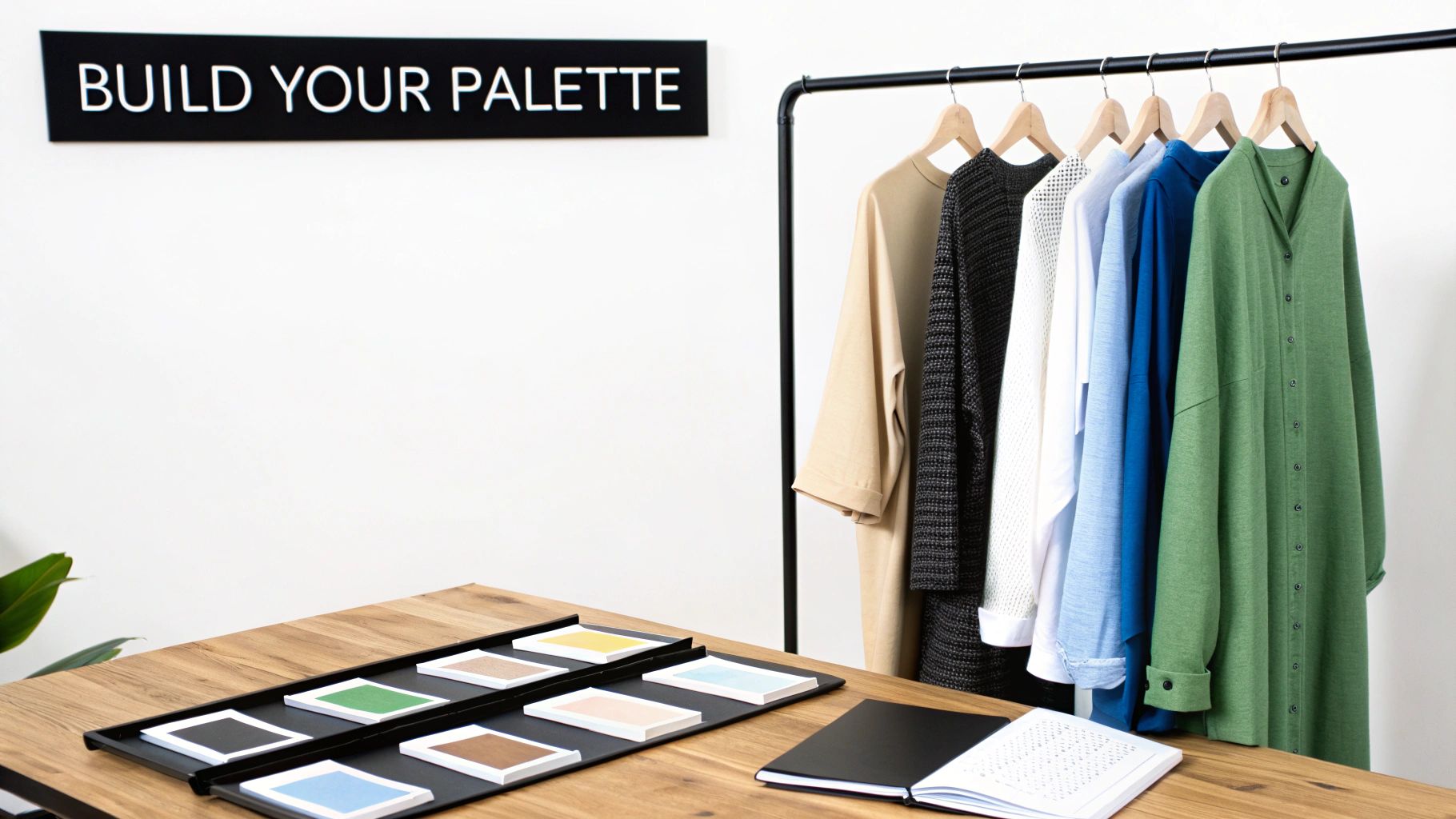
Okay, so you’ve discovered your personal color season—congratulations! That’s a massive step. But now for the big question: what on earth do you do with this amazing information? Knowing you're a "Winter" is one thing, but translating that into a wardrobe where every single piece looks fantastic on you is the real goal.
Think of it like being an artist. You wouldn't just splash one color on a canvas and call it a day, would you? Of course not! You'd blend and balance different shades to create something with depth and personality. Your personal color palette works the exact same way, built on three core types of colors that play together beautifully.
The Three Pillars of Your Palette
To turn your seasonal colors into a closet that actually works, you need to know the job of each color. Every killer outfit is a brilliant mix of neutrals, base colors, and accents. Let's dig into what that really means for your clothes.
-
Neutrals: These are the backbone of your wardrobe—the hardworking, go-with-everything shades. A Winter might build their closet on sharp black, brilliant white, and deep navy. An Autumn, on the other hand, would lean into warm neutrals like cream, camel, and rich chocolate brown.
-
Base Colors: Think of these as your "main" colors. They aren't quite as versatile as a neutral, but they are solid, reliable shades from your season that you can build an entire outfit around. A Summer might choose a soft slate blue as a base, while a Spring could use a bright, cheerful navy.
-
Accent Colors: This is where all the fun happens! These are the brightest, boldest, most eye-catching colors in your seasonal palette. They are absolutely perfect for injecting a shot of personality into your look through accessories, a fun top, or even a swipe of lipstick.
Imagine a Spring pairing a neutral khaki pant with a bright navy top (their base color). Then, they toss on a vibrant coral scarf—that’s the accent that makes the whole outfit sing! This simple formula is your secret weapon for creating endless combinations that always look polished and put-together.
Choosing Your Core Colors
The best way to start is by picking a core group of colors to be the foundation of your closet. You absolutely do not need to use every single color from your seasonal fan deck! Instead, you're aiming for a curated collection of shades you genuinely adore.
Your personal color palette isn't about limiting yourself; it's about giving yourself freedom. When you have a go-to set of colors that you know make you glow, getting dressed becomes faster, easier, and so much more joyful.
Start by choosing two to four neutrals and three to five main colors from your seasonal palette. From there, you can sprinkle in a few of your favorite accent shades to keep things exciting. You’ll be shocked at how this simple approach creates a wardrobe where everything magically coordinates.
For some extra inspiration, check out our guide on how to wear pastel colors—it has great tips you can adapt for any season's palette.
The Confidence Of Wearing Your Best Colors
Have you ever put on an outfit and just felt… amazing? Like you’re glowing from the inside out? That’s the magic of wearing colors that are in perfect harmony with your natural coloring. It’s about so much more than just looking good—it fundamentally changes how you feel and how the world sees you.
When you slip on a top in one of your power shades, something incredible happens. Your skin instantly looks healthier, your eyes pop with vibrancy, and even little things like dark circles or blemishes seem to just melt away. It’s a visible, tangible shift.
Think of it like lighting. The wrong colors are like standing under a harsh, buzzing fluorescent bulb that drains all the life from your face. But the right colors? That’s the soft, warm glow of golden hour sunlight. One washes you out, while the other makes you look absolutely radiant and alive.
The Psychological Boost Of Color Harmony
This impact goes way beyond what you see in the mirror. There's a powerful psychological lift that comes with knowing, without a doubt, that you look your absolute best. This isn't about vanity; it's about pure, unshakeable self-assurance.
When you take the guesswork out of getting dressed and walk out the door feeling polished and put-together, that confidence just radiates. It changes how you carry yourself and influences every interaction you have, both personally and professionally.
And this isn't just a feeling! A fascinating 2015 study confirmed that people wearing colors that complement their skin tone are actually perceived by others as more attractive and confident. The research was pretty staggering: 78% of respondents felt more confident in their best colors, and 63% said they got more compliments from friends and coworkers. You can explore the full study on color perception to see the data for yourself.
How Confidence Changes Everything
This kind of self-assurance is a total game-changer. It might be the little push you need to speak up in a meeting, the spark that makes a first impression unforgettable, or simply the poise that helps you move through your day with more grace. Your clothing stops being a source of doubt and becomes a tool for empowerment.
The connection between how we dress and how we feel is undeniable. When your outer appearance aligns with your inner self, it creates a powerful synergy that boosts your mood and enhances your presence.
Diving into the psychology behind fashion choices really shows how deeply our clothing impacts our mindset. Choosing your best colors isn't just a style trick; it's a deliberate act of self-care that pays off everywhere in your life. It’s the real 'why' behind this whole color journey—connecting practical analysis with powerful emotional and social benefits, turning style into a true source of strength.
Your Action Plan For A Colorful Wardrobe

Alright, the theory is great, but the real magic happens when you put it into practice. You've uncovered your undertone and your season, and now it's time to unleash that power on your closet! Let's get hands-on and start building a wardrobe that feels like it was made just for you.
The very best place to start? A closet audit. Don't worry, this isn't about tossing everything you own. It’s about rediscovering your clothes with a brand new perspective. Go through your wardrobe, item by item, and make two piles: one for clothes that sing in harmony with your color season, and another for those that don't quite hit the right note.
Trust your intuition here. When you hold up a shirt and it instantly makes you feel radiant and alive, that’s a keeper! If another piece makes you look tired or just feels a little off, it’s probably clashing with your natural coloring.
Start Your Strategic Wardrobe Edit
Once you’ve sorted everything, you’ll see your wardrobe in a whole new light. You'll spot the gaps immediately. This is your chance to shop with intention instead of just grabbing things that look good on the hanger. The mission is to find those perfect pieces in your best colors to create a collection that’s both stunning and incredibly easy to mix and match. A fantastic way to do this is to learn how to build a capsule wardrobe using your personal color palette as the ultimate guide.
Here’s a simple game plan to get you going:
-
Identify Your Core Neutrals: Take a look at your "keep" pile. Do you have enough workhorse pieces like trousers, skirts, jackets, and basic tees in your most flattering neutral shades? If you’re missing these, they should be at the top of your shopping list.
-
List Your Missing Base Colors: What key items are you missing in your main seasonal colors? Maybe you're a Deep Autumn who could really use a rich olive green sweater, or a Light Summer who needs that perfect dusty rose blouse. Make a list!
-
Plan Your Accent Pieces: Last but not least, think about the fun stuff—accessories! Scarves, jewelry, handbags, and even lipstick are brilliant, low-stakes ways to introduce your accent colors and add that pop of personality that makes an outfit uniquely yours.
Got Questions? Let's Talk Color Analysis
Dipping your toes into the world of color analysis is exciting, but it's totally normal for a few questions to pop up along the way. Let's tackle some of the most common ones I hear, so you can feel confident on your journey to discovering the colors that make you glow.
"What if I'm stuck between two seasons?"
This is probably the number one question people have! It happens all the time, especially if you're torn between seasons that share an undertone—like Autumn and Spring (both warm) or Summer and Winter (both cool).
The secret lies in looking beyond the undertone and focusing on your contrast and color intensity. For instance, both Winters and Summers are cool-toned, but they have completely different vibes. Winters have high contrast and come alive in sharp, vivid jewel tones, while Summers have a more delicate, lower-contrast look and absolutely shine in soft, muted shades.
"Will dyeing my hair change my color season?"
Great question! While a major hair color change can definitely shift your overall look, it won't change your fundamental season. Why? Because your season is rooted in your skin's undertone, and that's not going anywhere.
So, a Deep Autumn who goes platinum blonde won't magically become a Light Spring. You might find you can play with a few colors from a neighboring season more easily, but your core palette—your true home base—will always be your most flattering.
The most important thing to remember is that color analysis is a fantastic guide, not a set of strict, unbreakable rules. The whole point is to feel amazing in what you wear. If you’re a "Winter" but you fall head-over-heels for a soft lavender sweater (a classic Summer color), you should absolutely wear it!
Can My Season Change Over Time?
This is a really insightful question! Your core color season, which is determined by your skin's undertone, will not change. It’s with you for life.
However, as the years go by, our natural coloring in our skin, hair, and eyes can soften a bit. This might mean a vibrant Deep Winter finds herself naturally reaching for the slightly less intense colors within her palette. You're still a Winter, just beautifully exploring the softer side of your spectrum!
Ready to build a wardrobe that feels like it was made just for you? Check out the latest collections at Arrisco, where incredible style meets your perfect palette. Find your new favorite pieces today!
